skin, hair, nails health assessment
1/63
There's no tags or description
Looks like no tags are added yet.
Name | Mastery | Learn | Test | Matching | Spaced |
|---|
No study sessions yet.
64 Terms
does skin contribute to identity?
tattoos
skin color
acne
piercing
degree 1 burn
sun burn - light pink skin
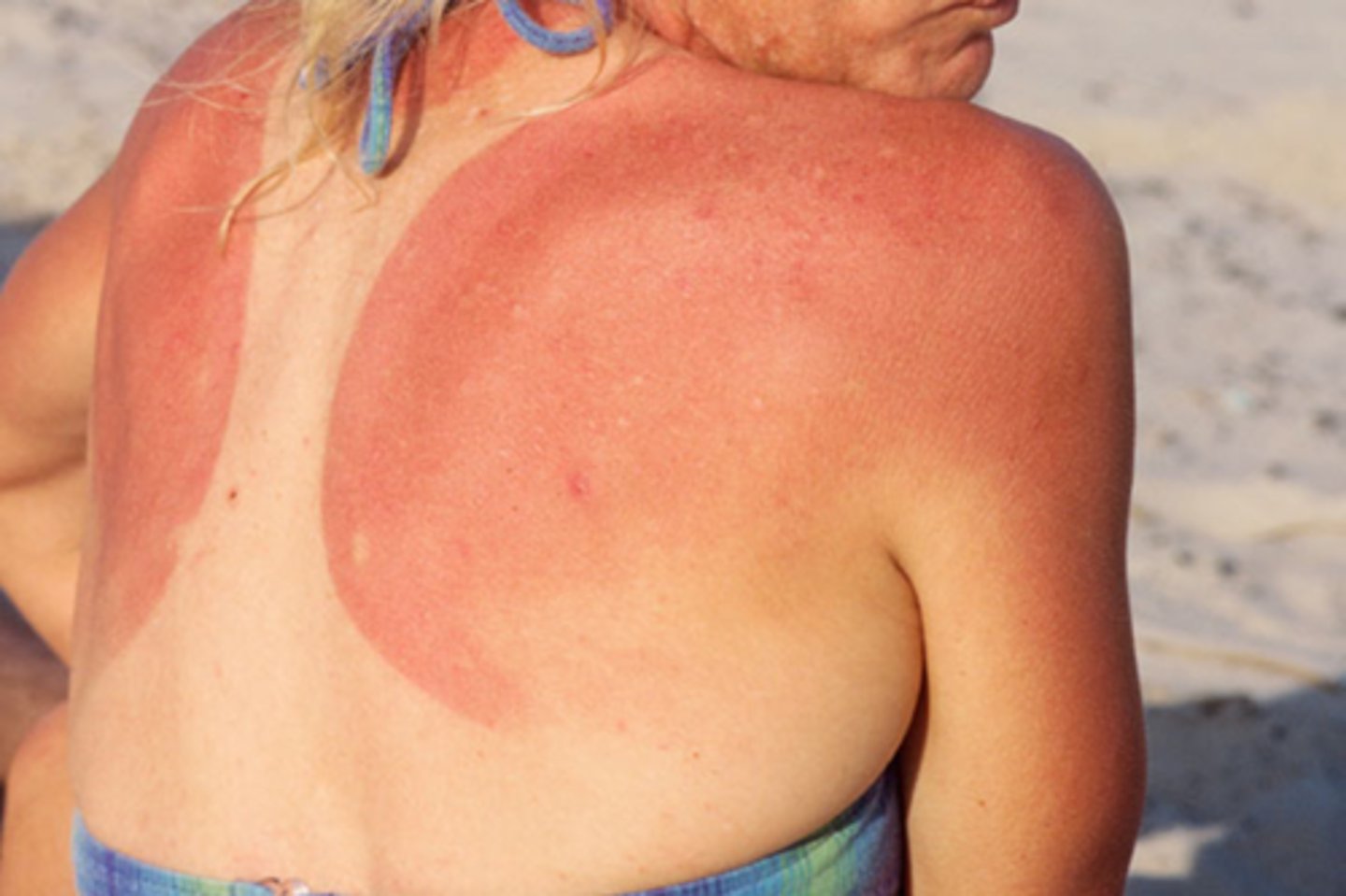
2nd degree burn
sun poising, blisters
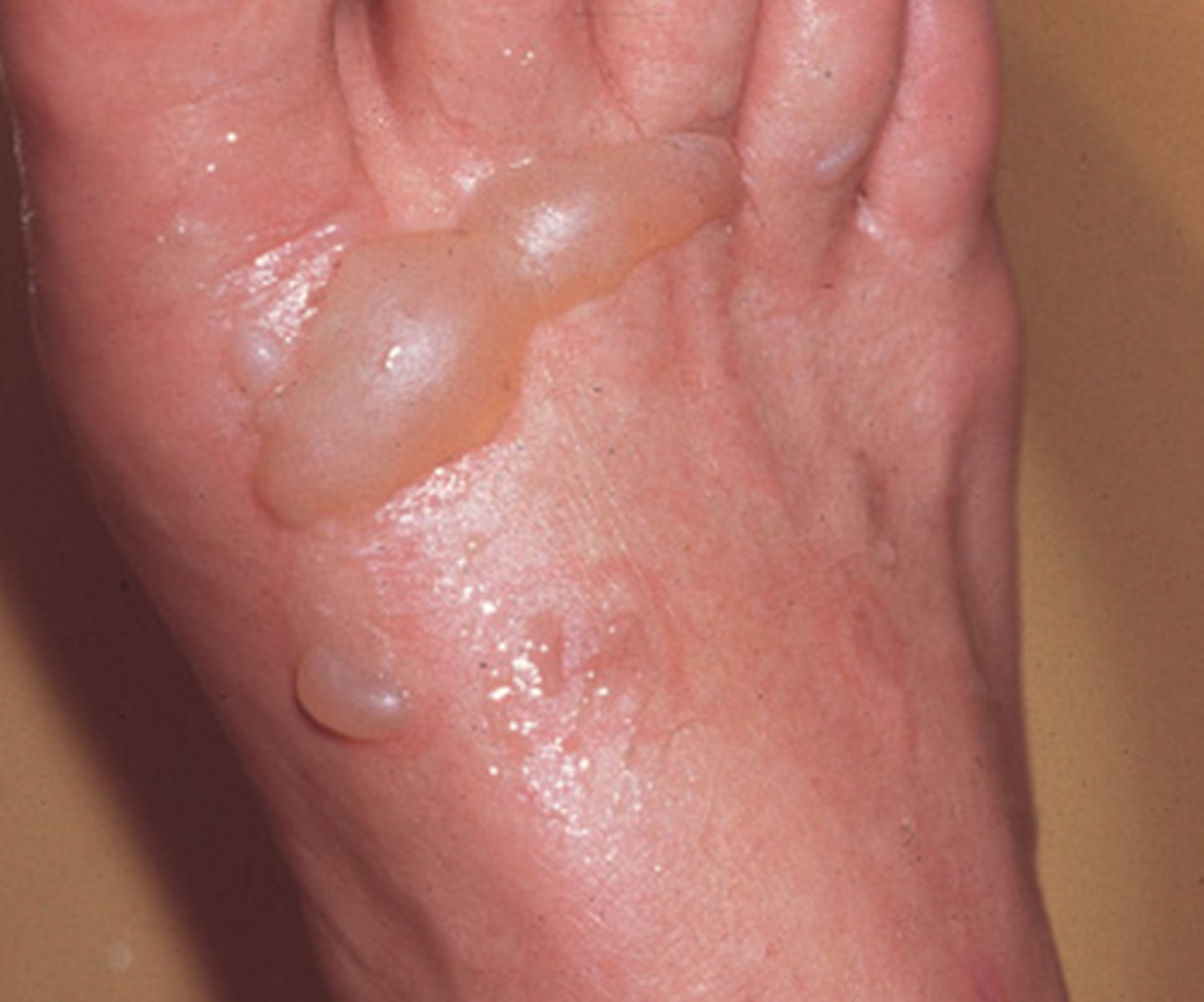
3rd degree burn
Full thickness damage through skin into nerves and muscles
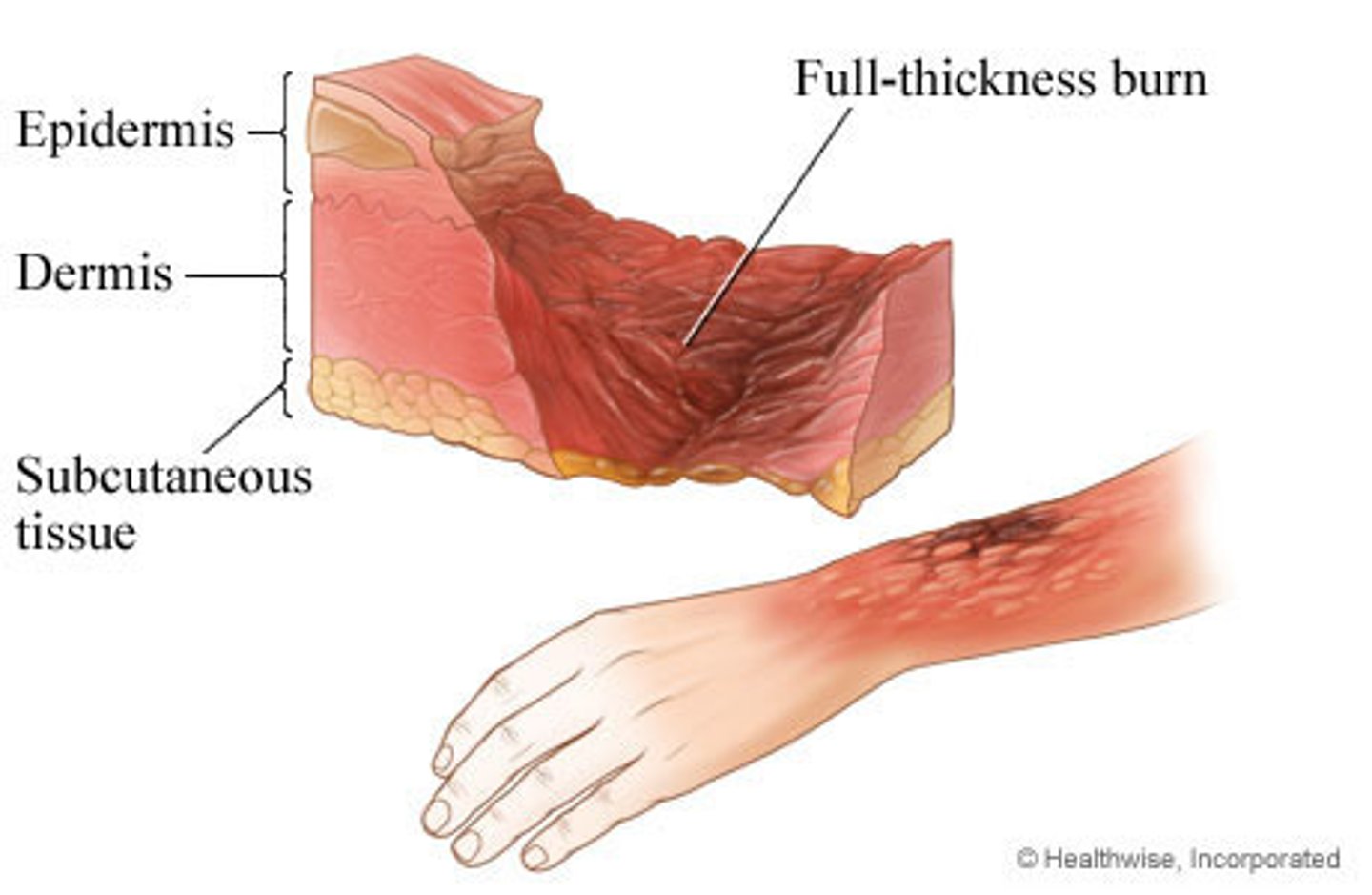
ecchymosis
bruise
petechiae
a small red or purple spot caused by bleeding into the skin.
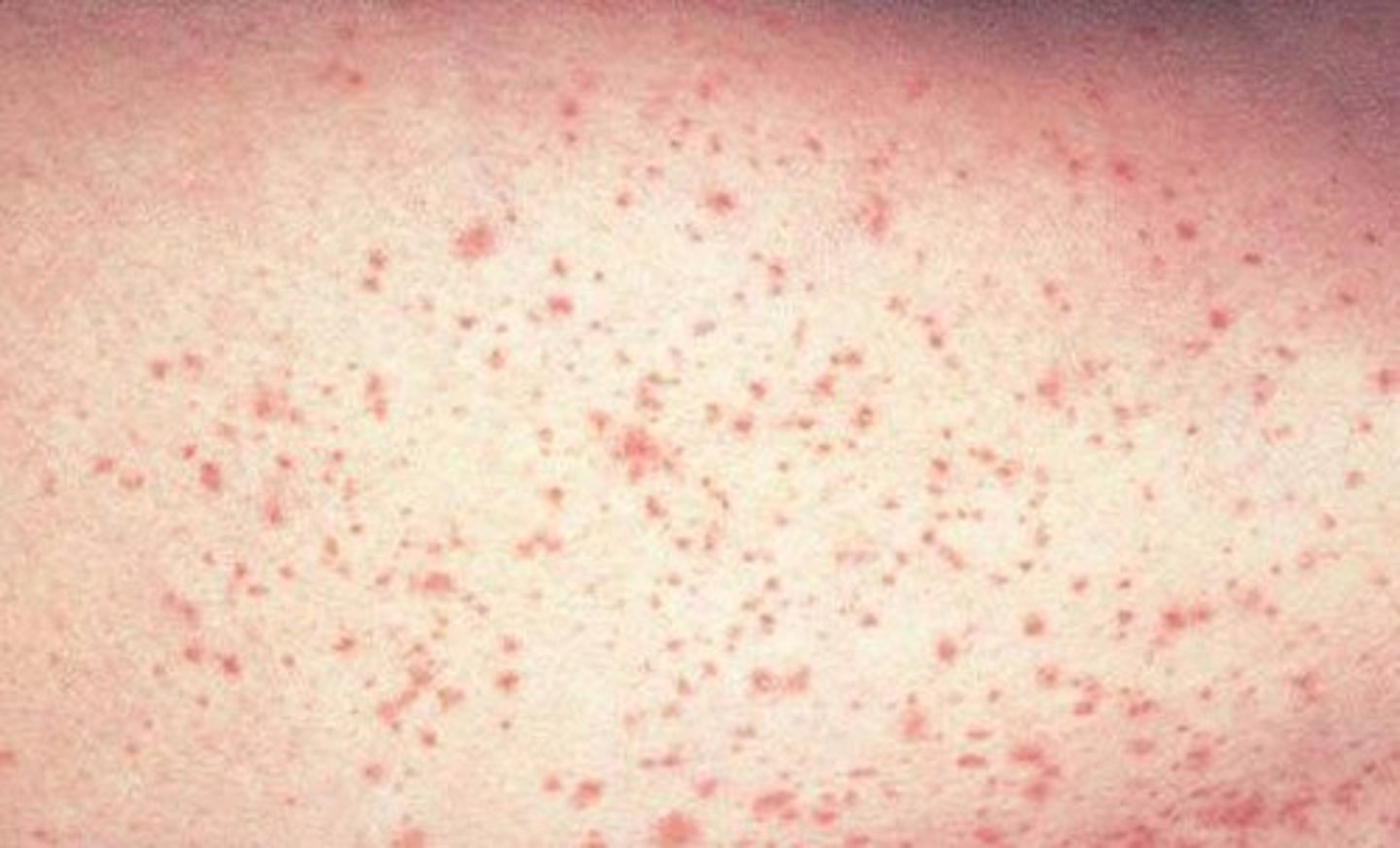
uticaria
hives
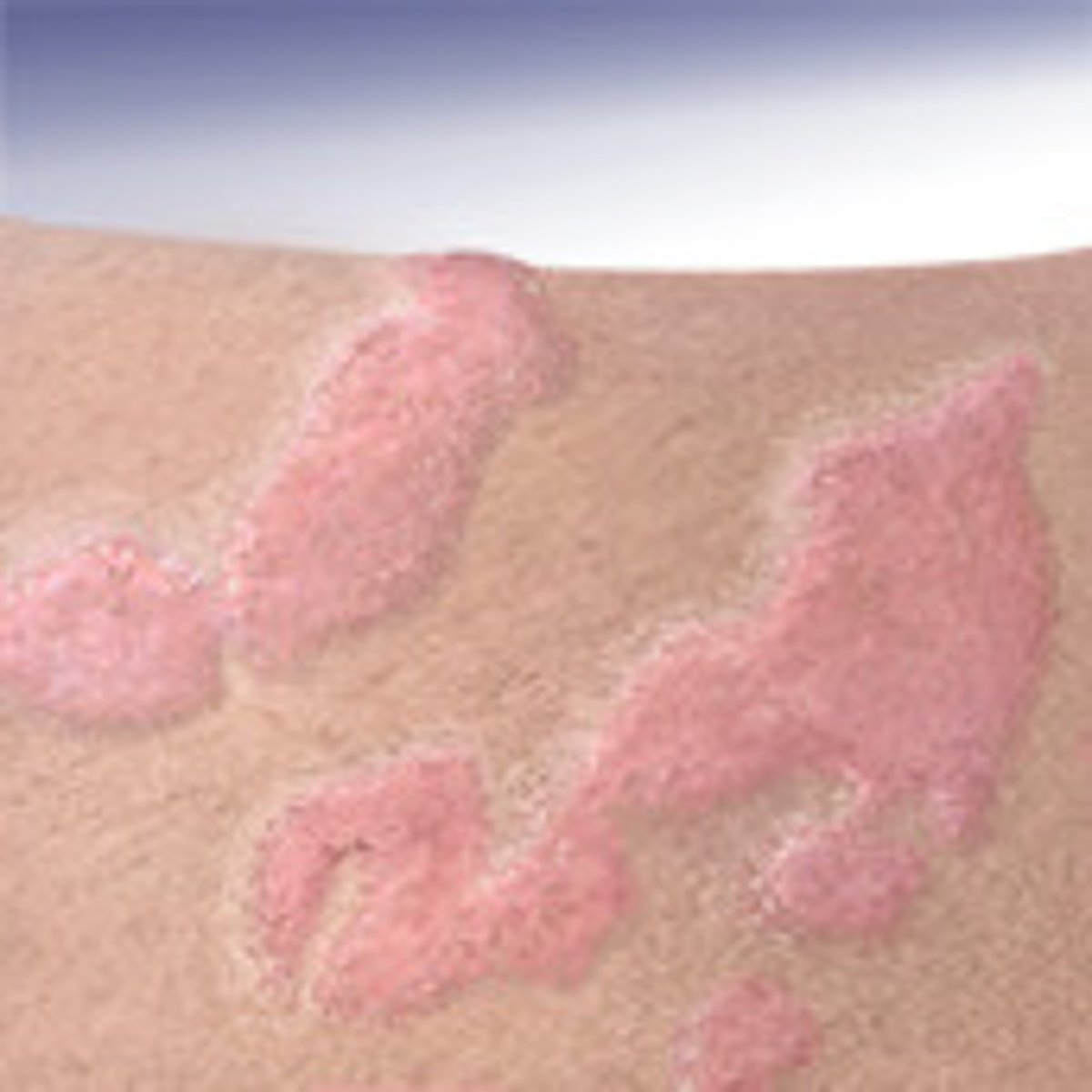
prurius
itchy
wheals
large lesions
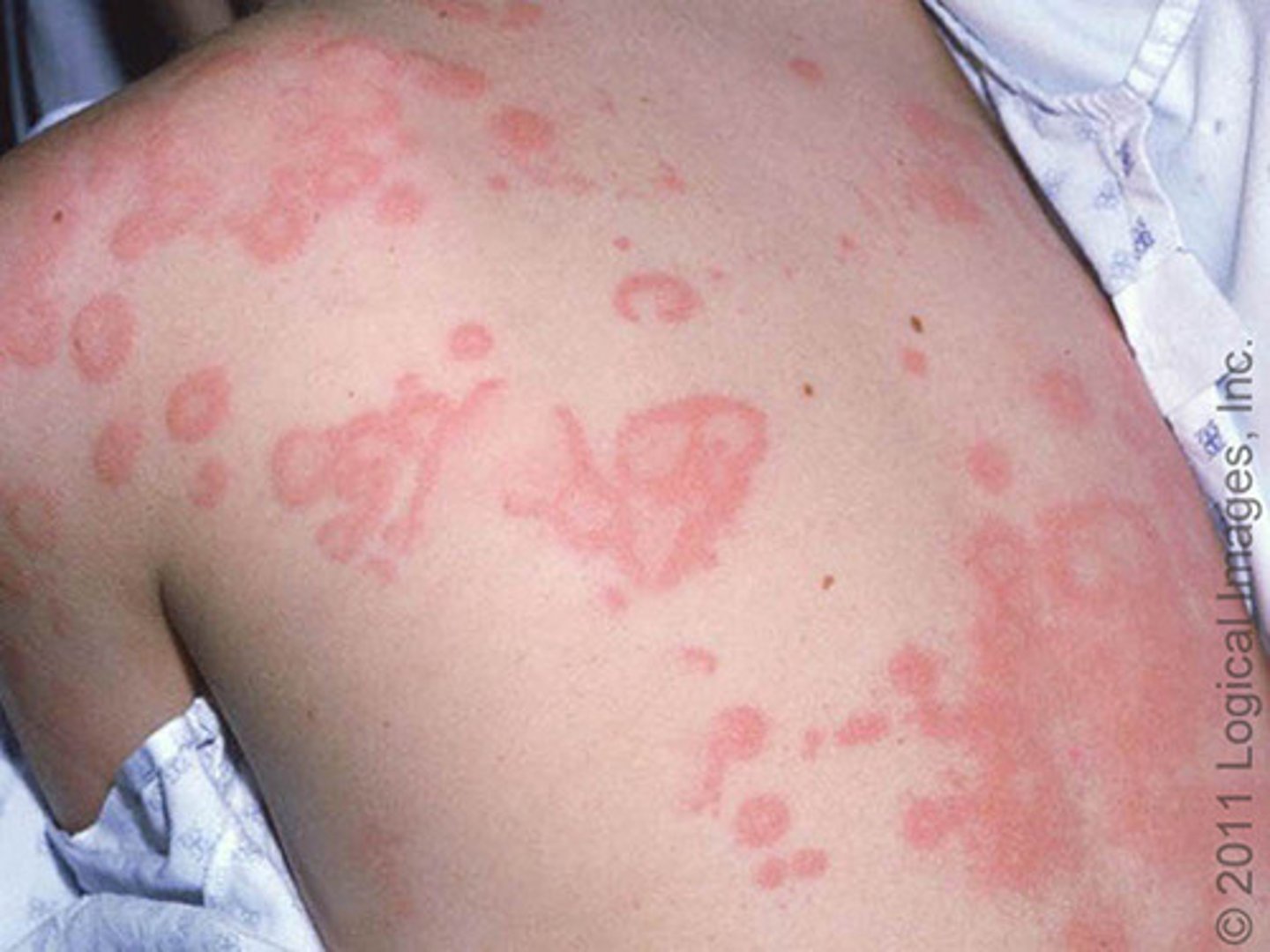
clubbing of fingers
Enlargement of fingertips due to chronic hypoxia.
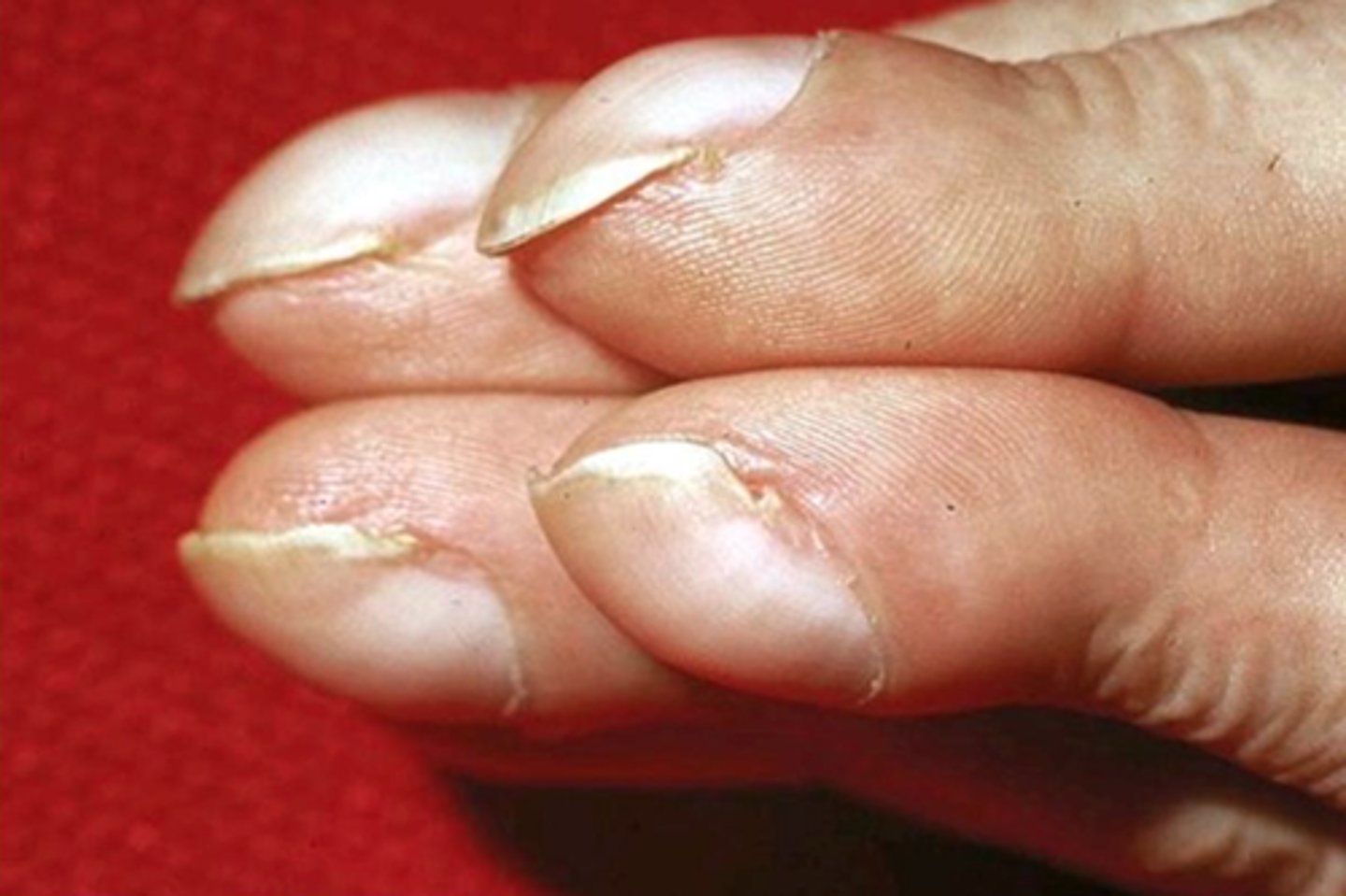
skin history of adults
past skin diseases
sun exposures
recent changes - warts or moles
sores
geriatric skins
thinning, dryness, wrinkles, and age spots due to natural aging processes
normal nevi
moles
dysplastic nevi
atypical moles that can develop into skin cancer
lots of small dots (on back)
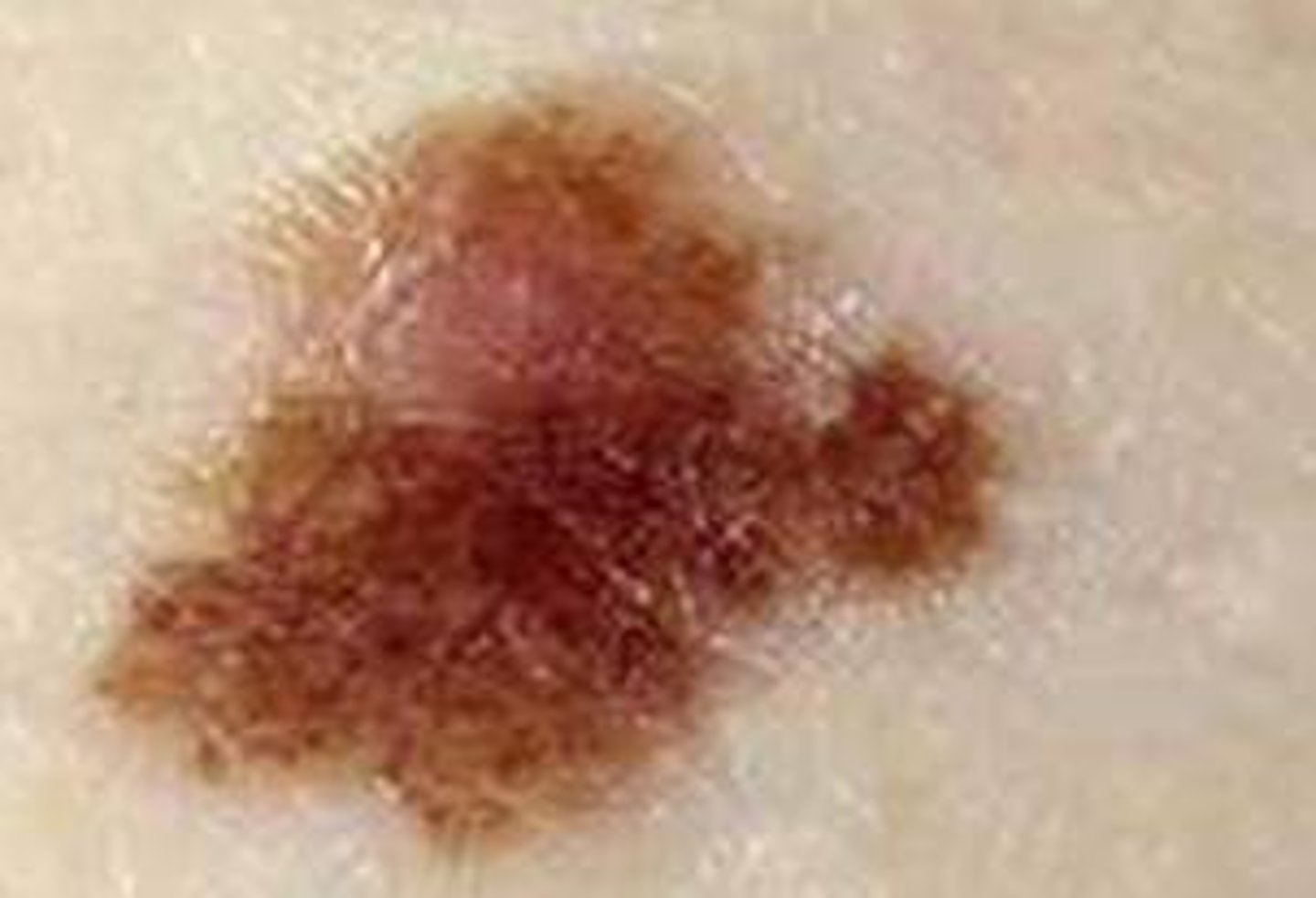
melanoma moles
asymmetry
border
color
diameter
elevation/evolving
firm
growing progressively
ABCDEFG
skin assessment IPPA
inspection
- color, changes
vitiligo
loss of pigment in areas of the skin
micheal Jackson
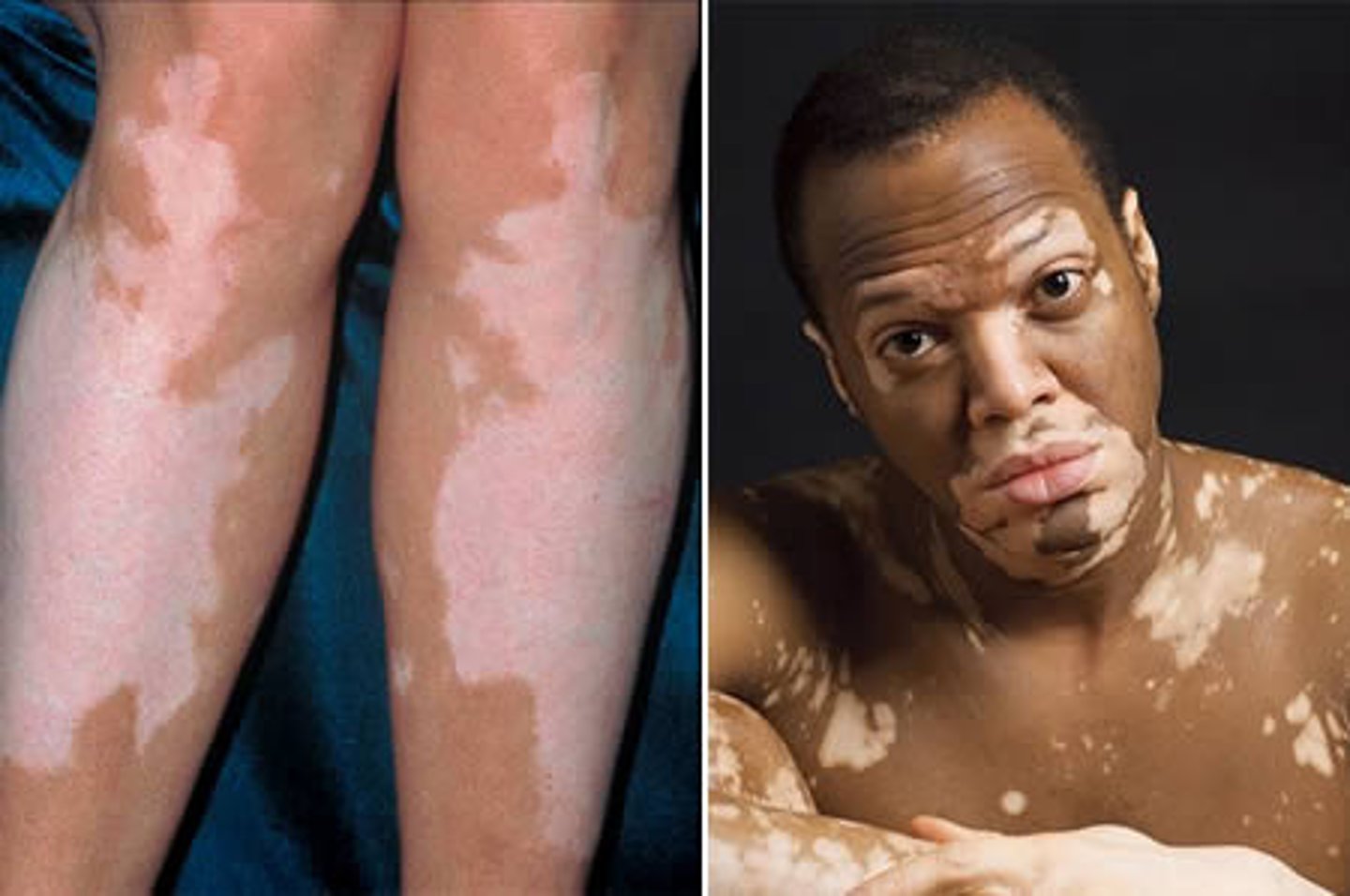
Mongolian spots
bluish purple spots of pigmentation
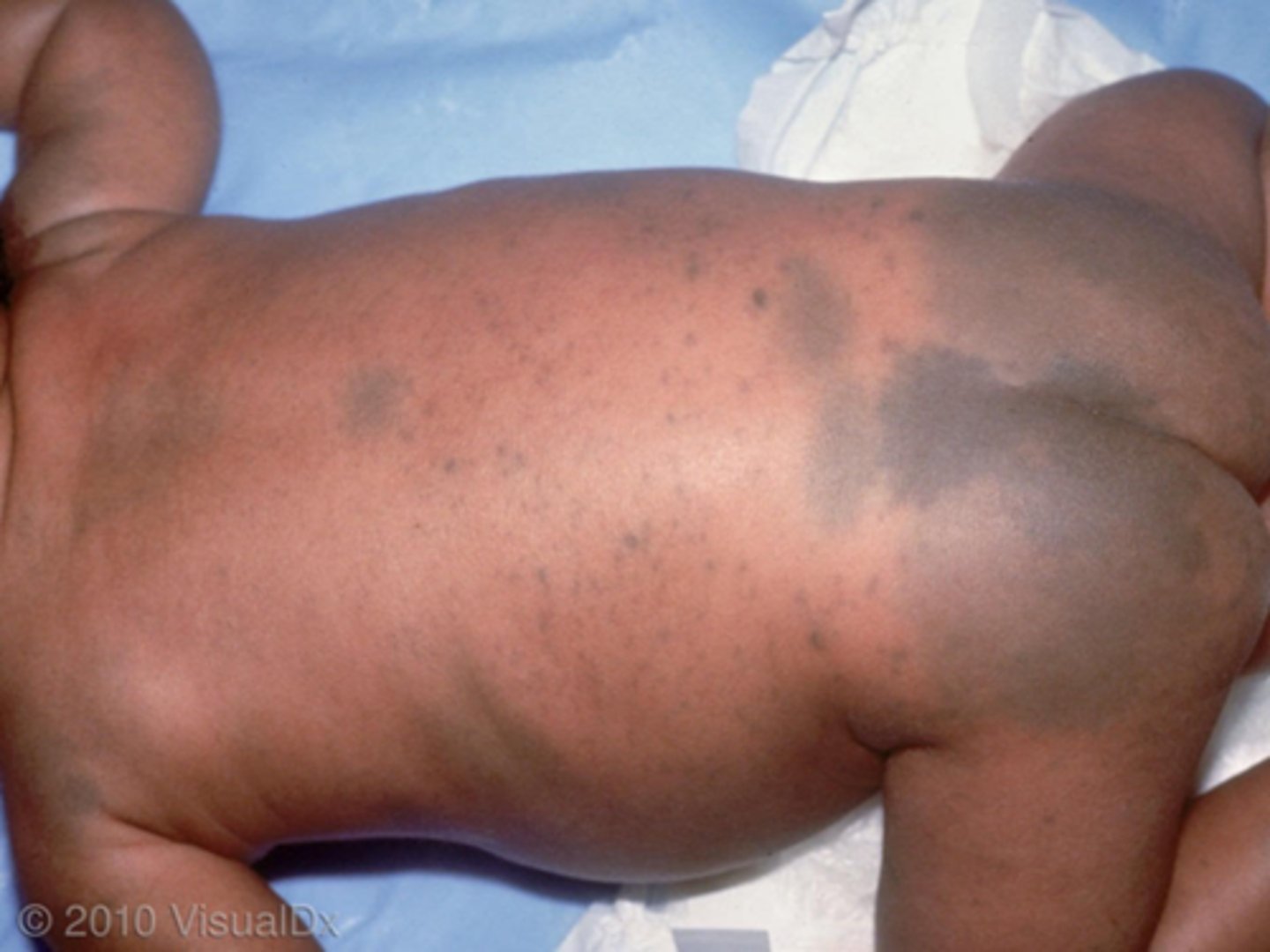
Jaundice
yellow skin and sclera
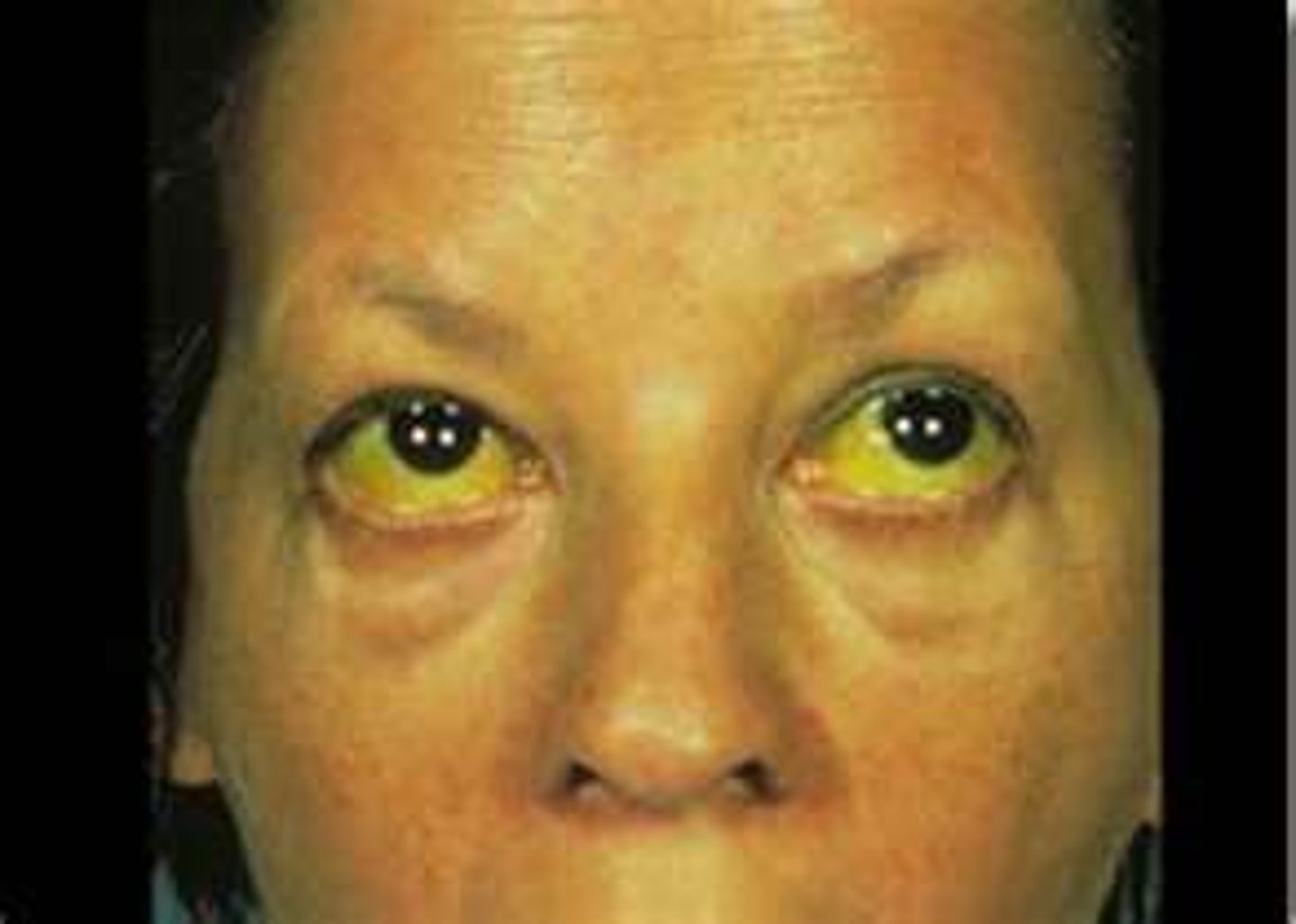
cyanosis
blue skin, mucous membranes, conjunctiva, lips
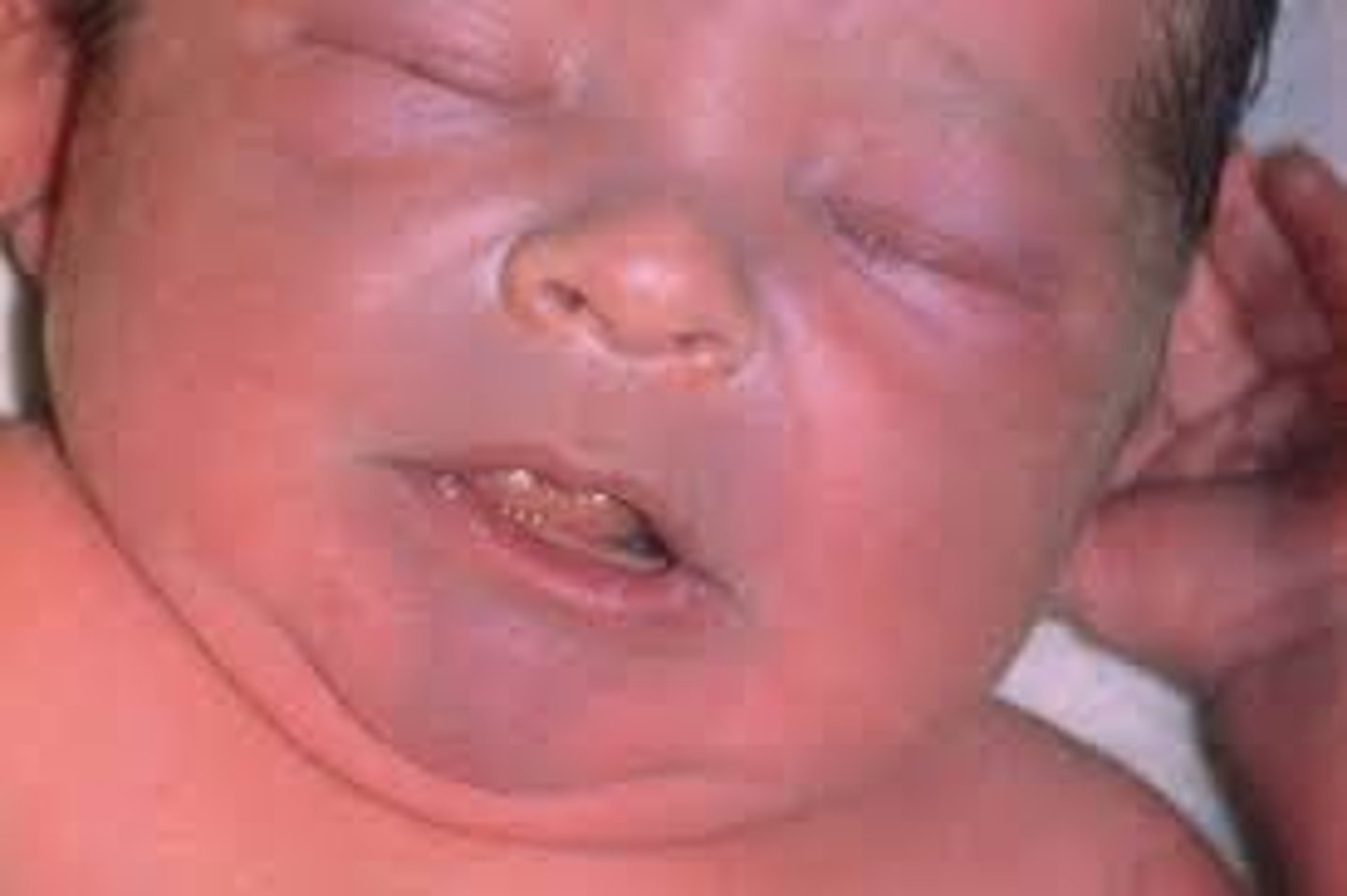
pallor
pale conjunctiva
erythema
redness
hypoxia
lack of oxygen
inspection of the skin
intactness of skin, color, shape/position/size lesions, scars?
configuration of a rash
grouped
zosteriform
annular and arciform
linear
distribution of rash
plantar, facial, patchy, symmertrical, heat rashes
palpation of the skin
temperature
moisture
texture
turgor
edema
edema
puffy swelling of tissue from the accumulation of fluid
macule
flat, circumscribed, colored lesions
freckles
macular rash
flat and red, less than 1 cm in diameter
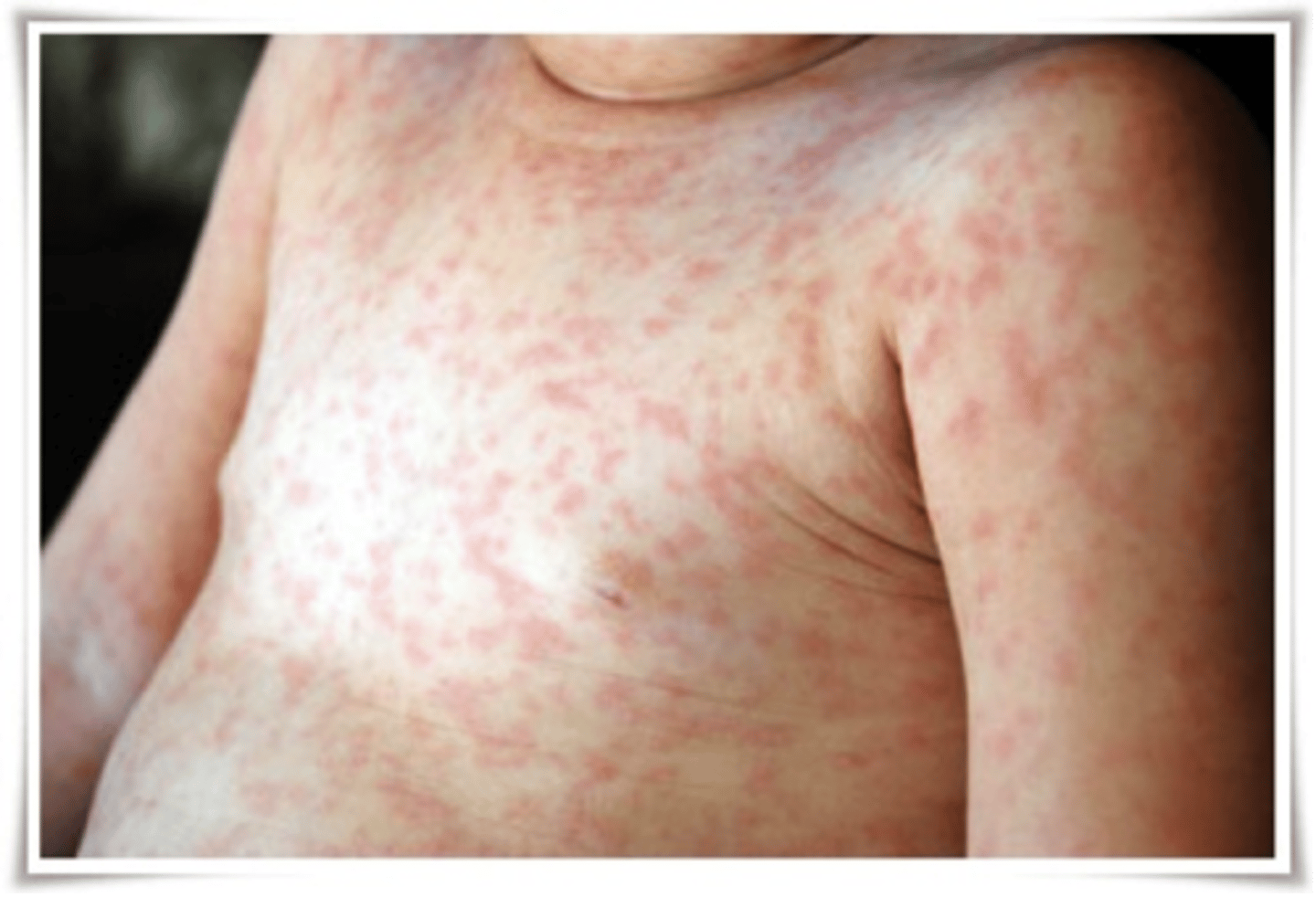
patch
large macule
flat, non-pliable, irregular shaped macule, more than 1 cm in diameter
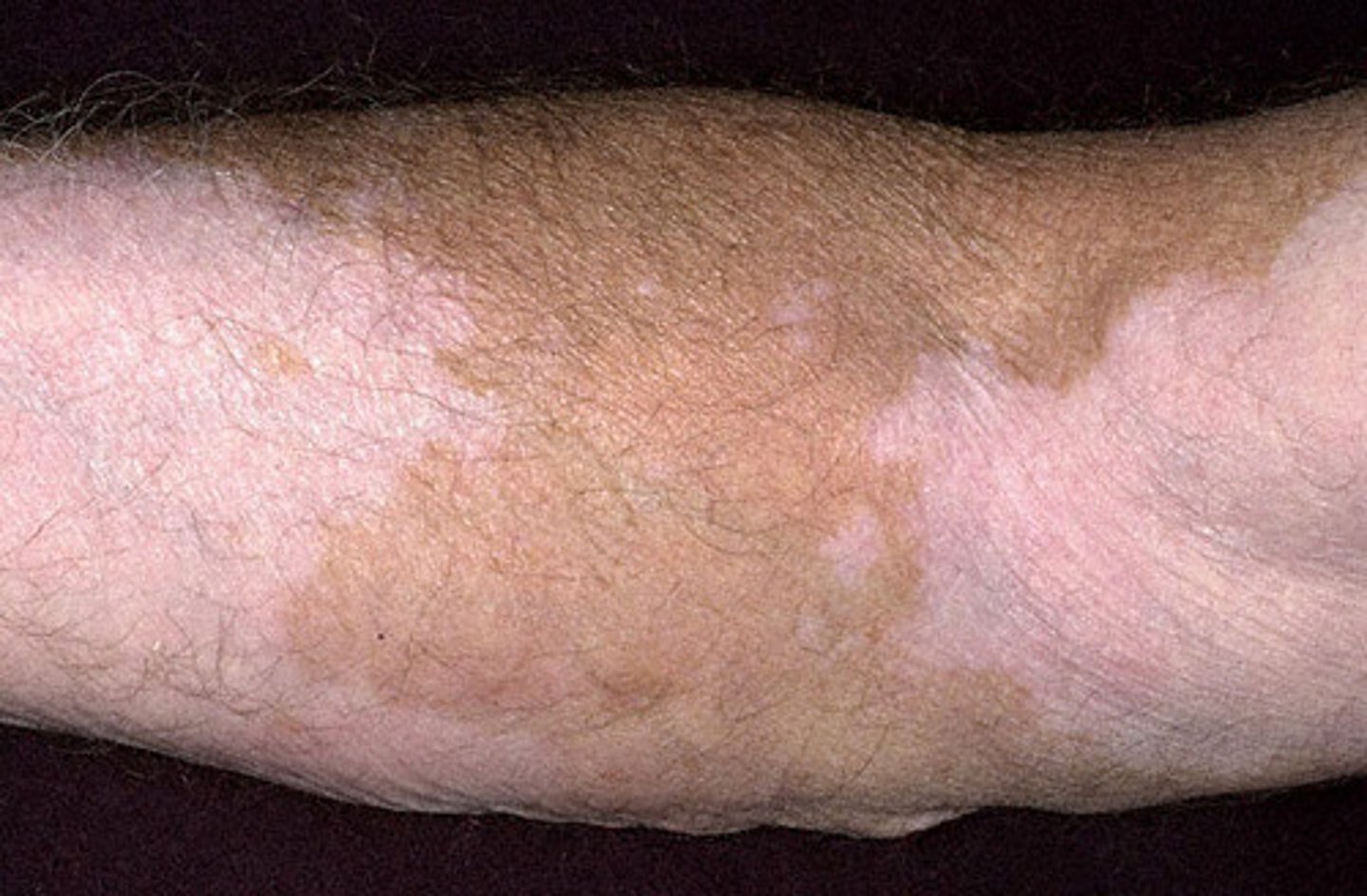
papule
small, solid, raised lesion on surface of the skin
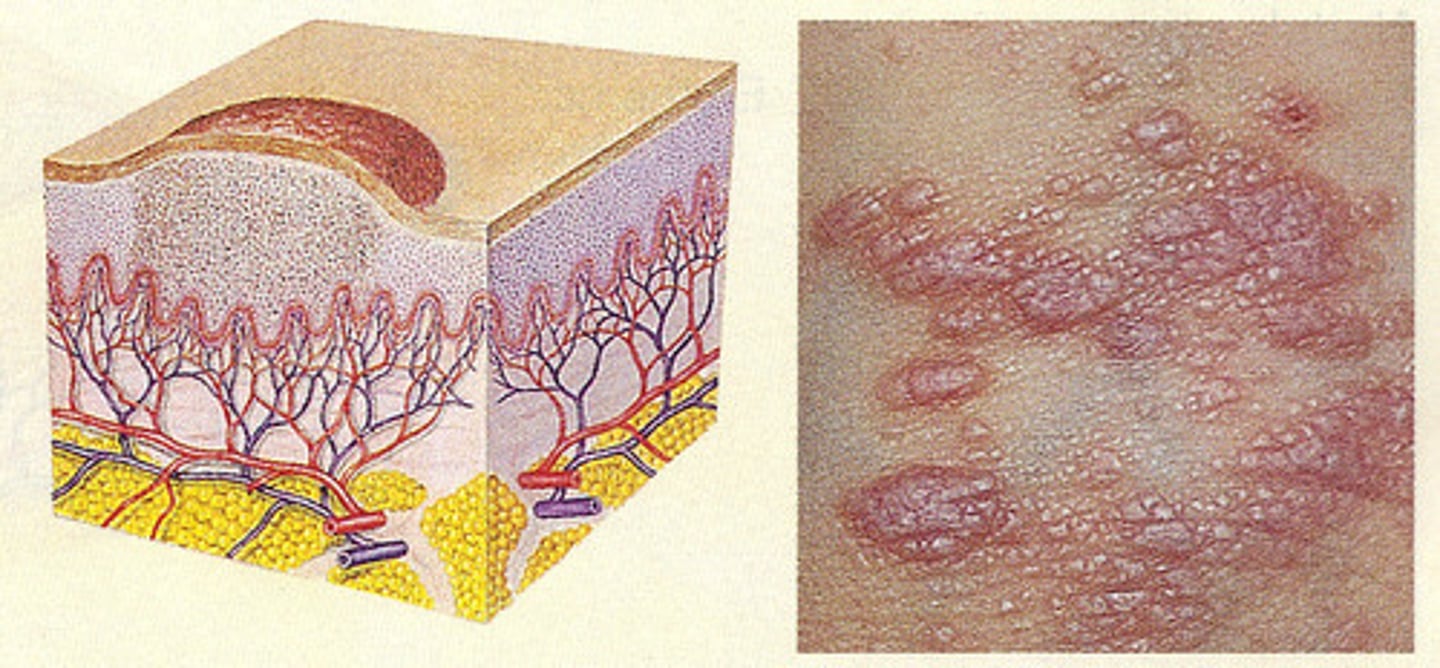
plaque
elevated, solid, superficial lesions
greater than 1 cm in diameter
larger papule
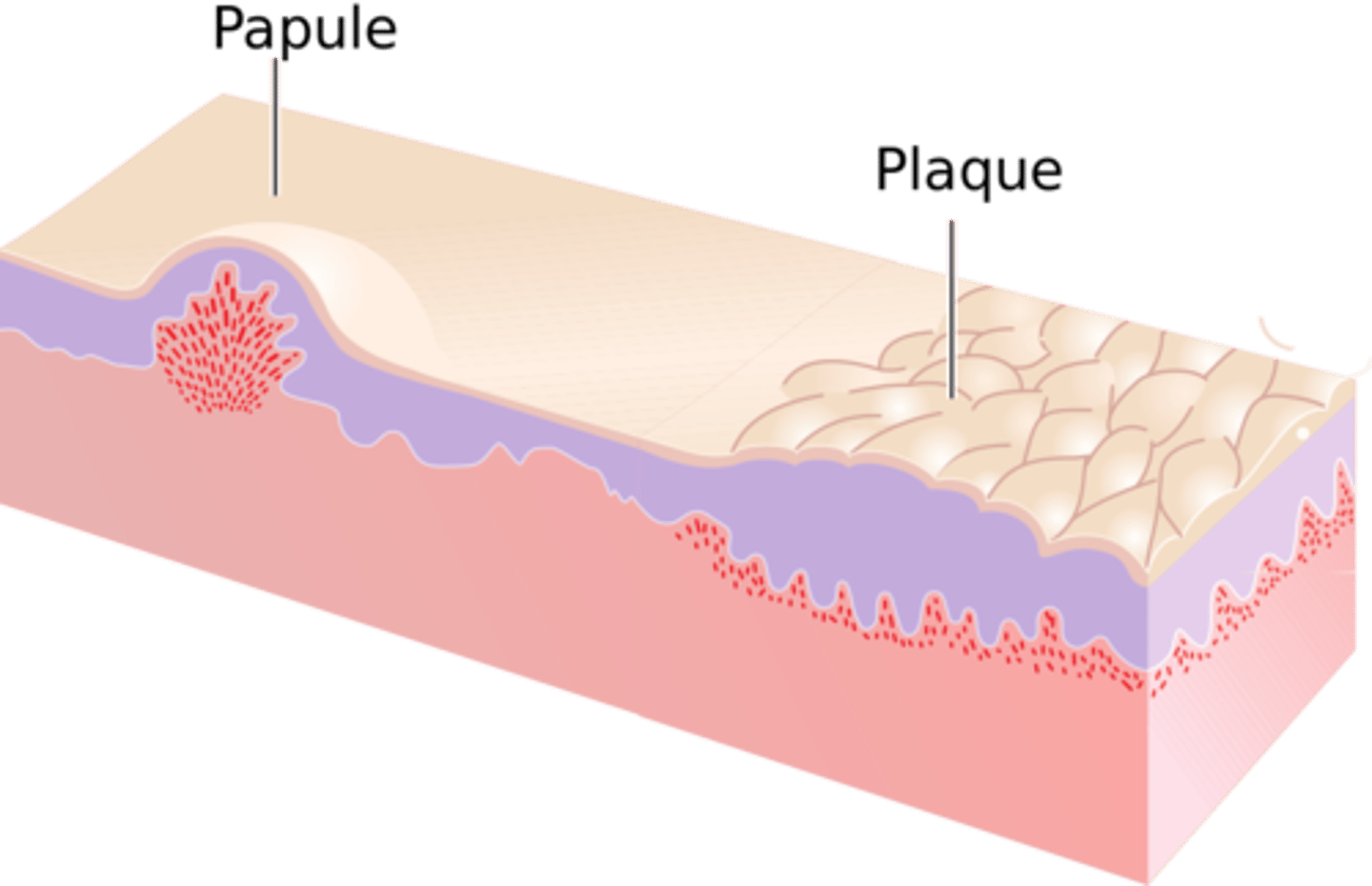
nodule
growth of abnormal tissue under skin
can also be in deeper tissue and organs
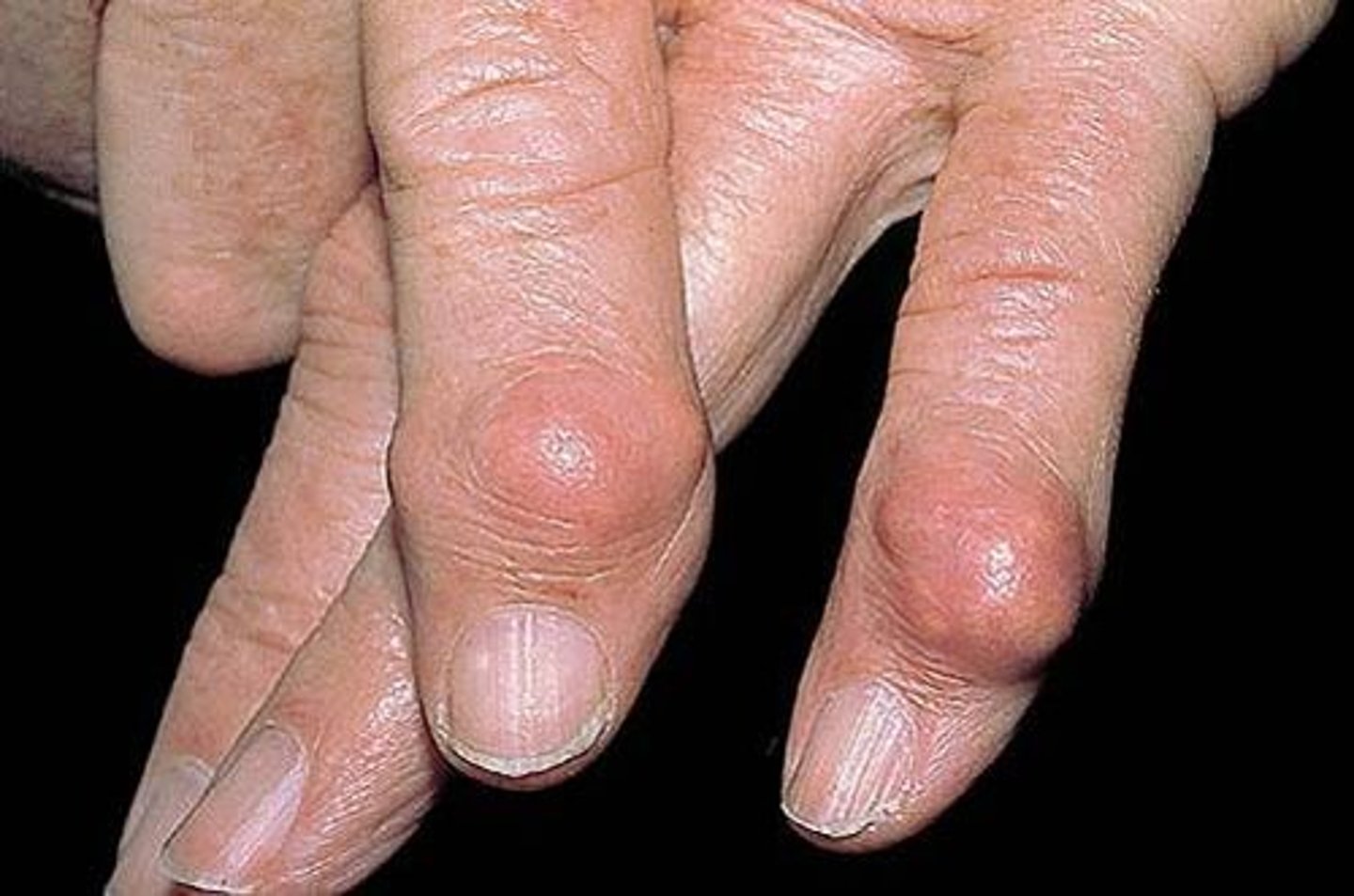
tumor
elevated and solid lesion
may or may not be clearly demarcated, deeper in dermis, greater than 2 cm in diameter
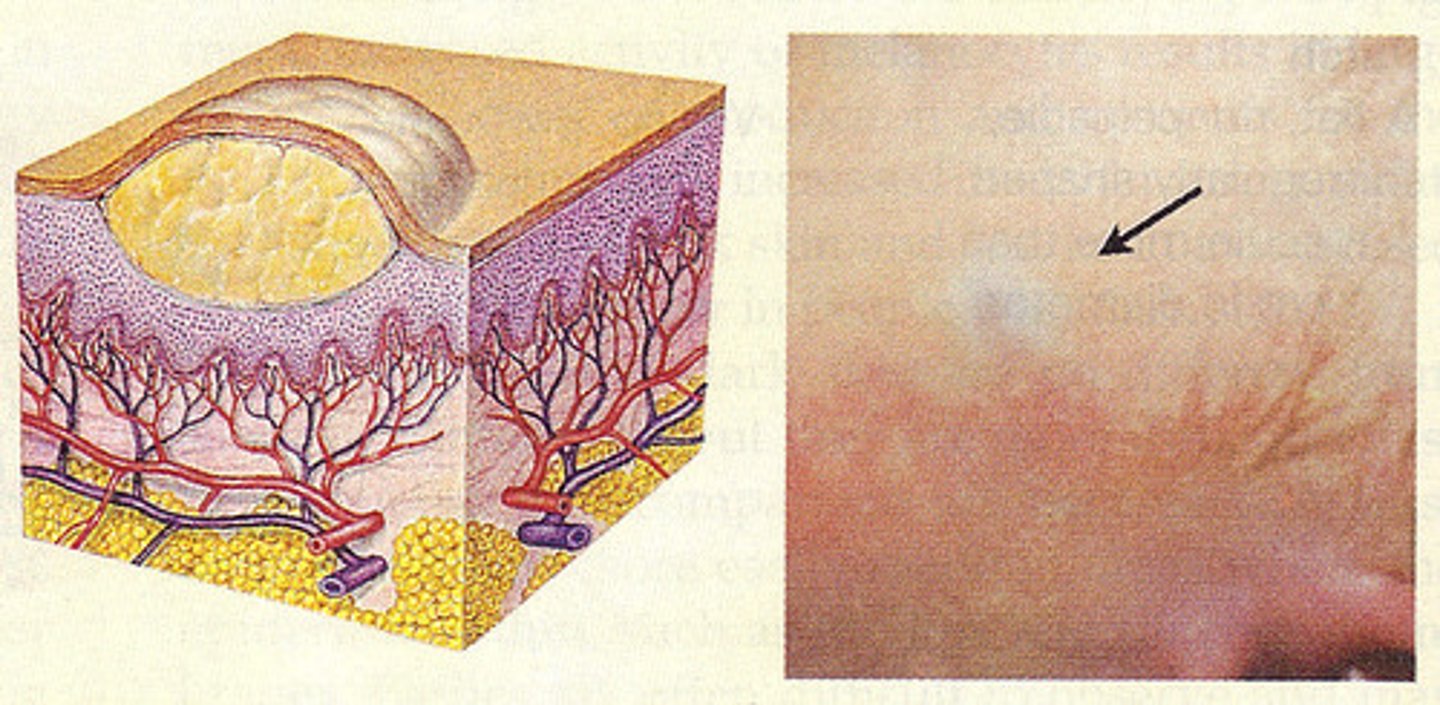
wheal
an area of the skin which is temporarily raised, typically reddened, and usually accompanied by itchy
welt, hive
allergy related
urticaria
allergic reaction of the skin characterized by the eruption of pale red, elevated patches called wheals or hives
vesicle
lesion that is fluid filled
aka pustule
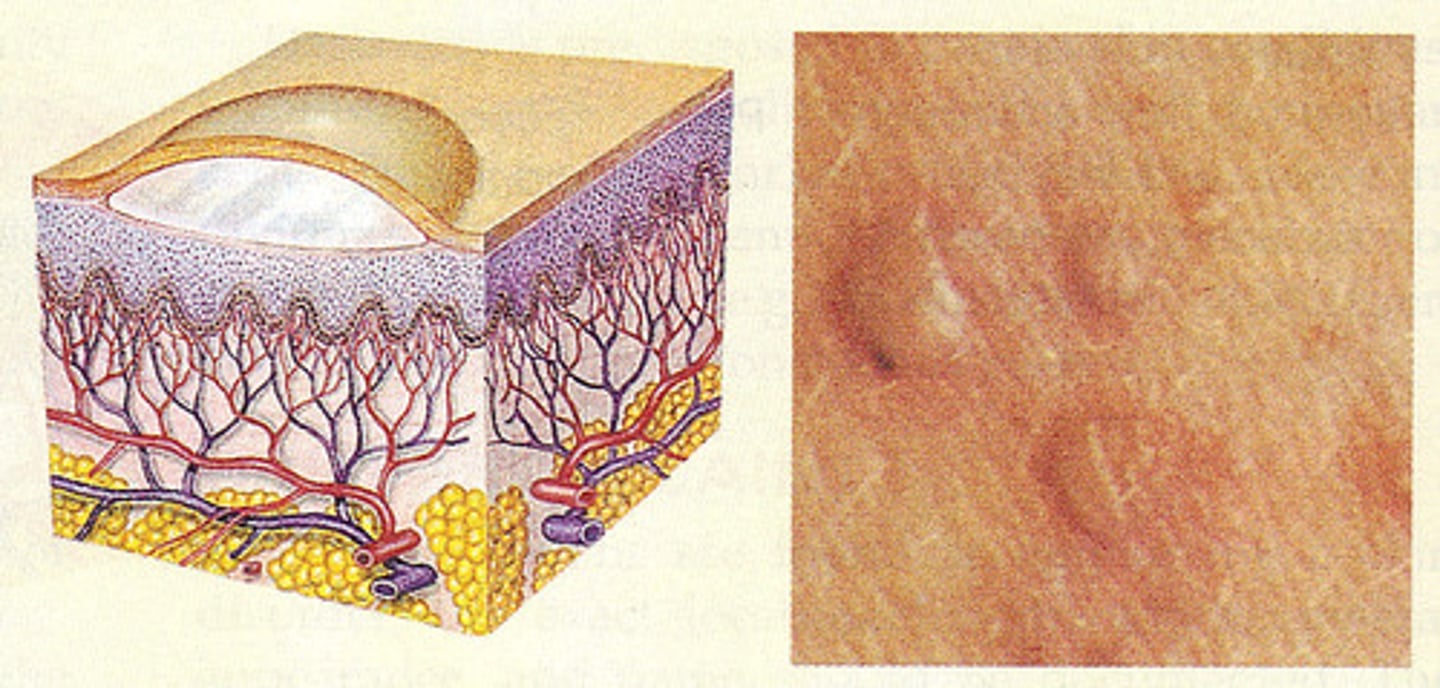
bullae
cyst
large fluid filled lesion
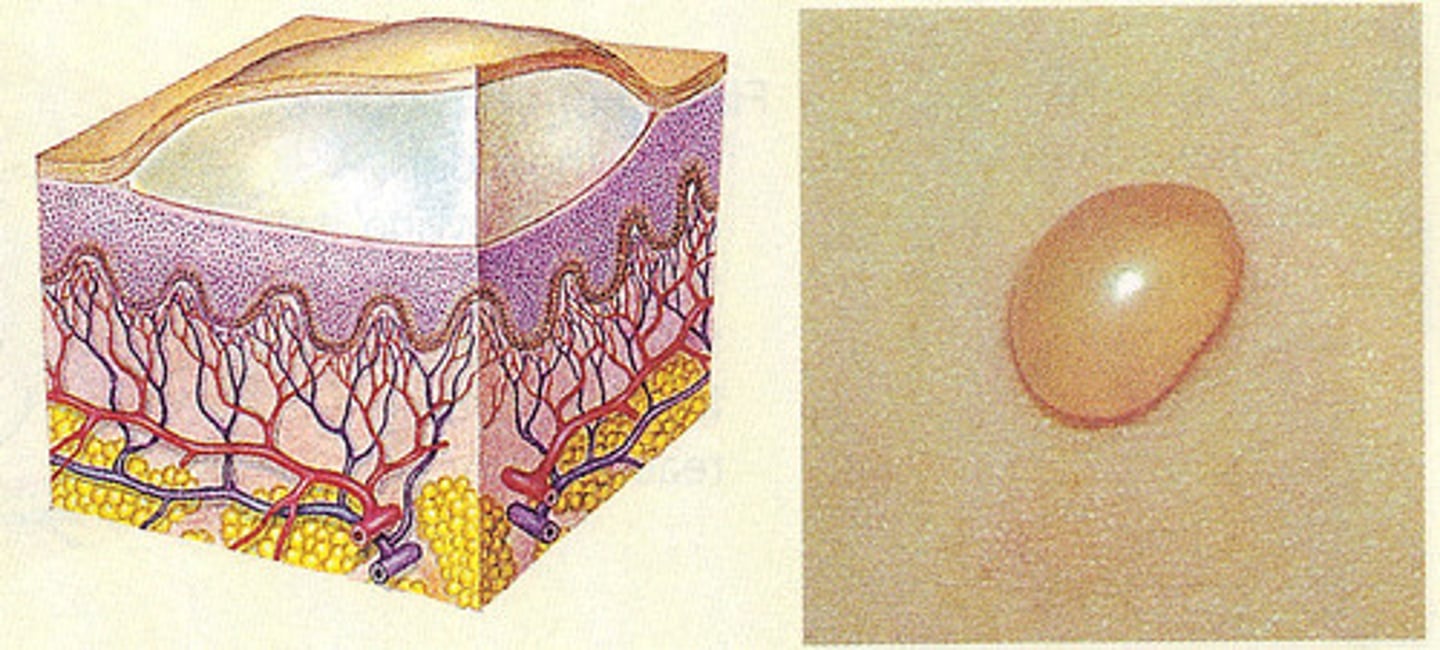
pustule
elevated, superficial lesion, similar to a vesicle but filled with purulent fluid
acne
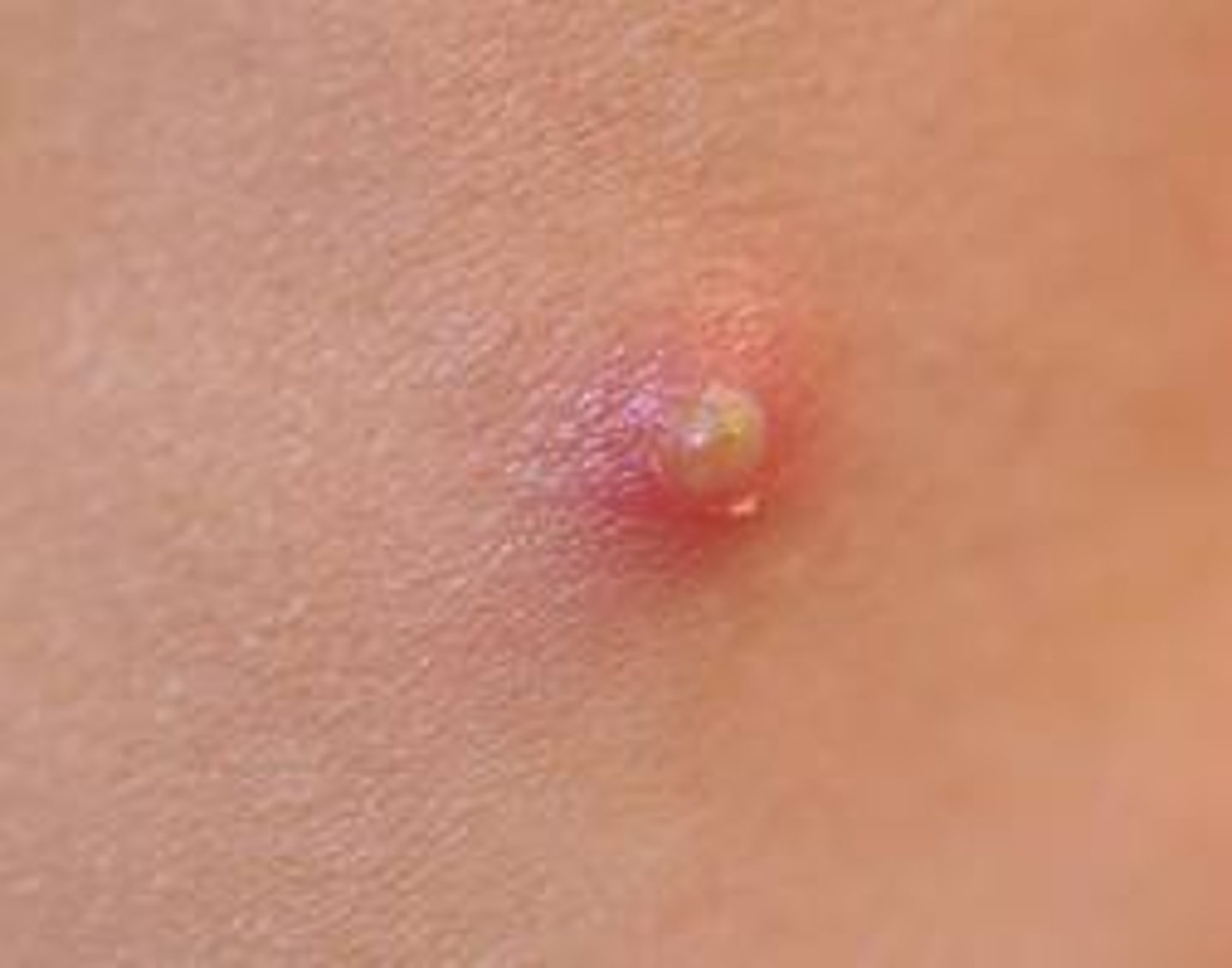
secondary lesions
erosion, excoriation, scale, crust
fissure, scar, keloid, ulcer, atrophy
erosion
loss of part of the epidermis, depressed, moist, glistening, follows rupture of a vesicle or bulla
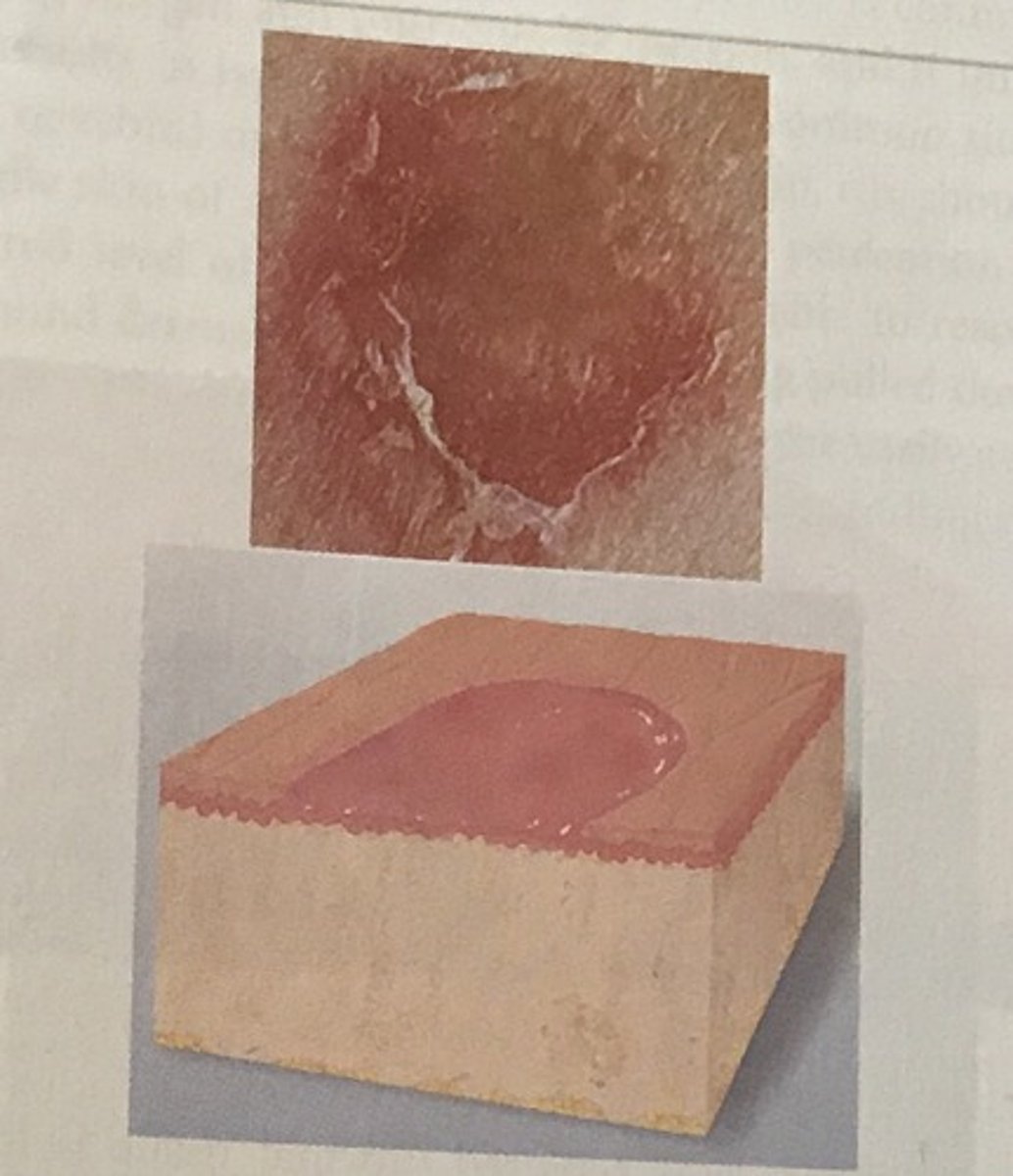
excoriation
Skin sore or abrasion produced by scratching or scraping
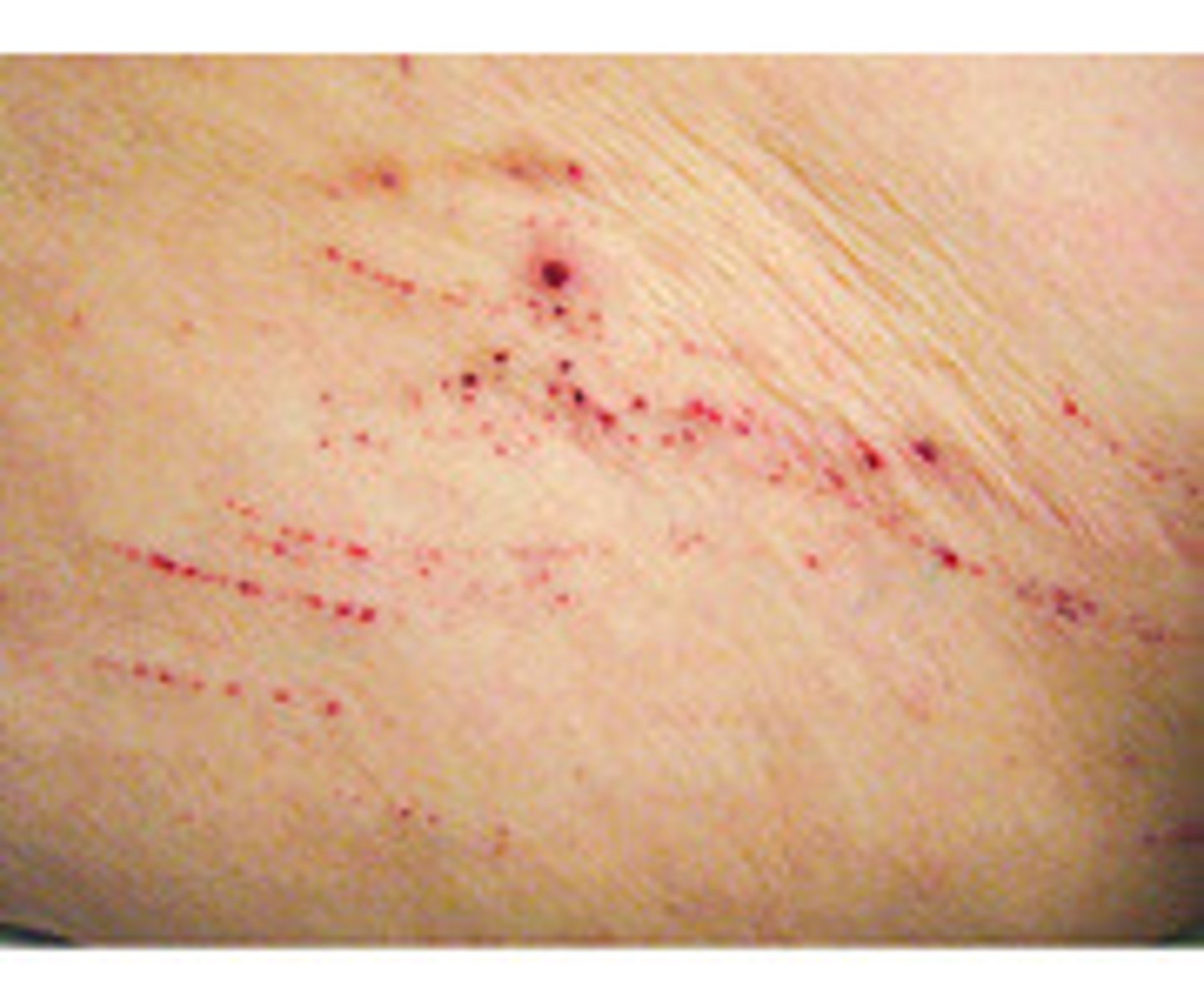
scale
heaped-up keratinized cells, flaky skin, irregular, thick or thin, dry or oily, variation in size
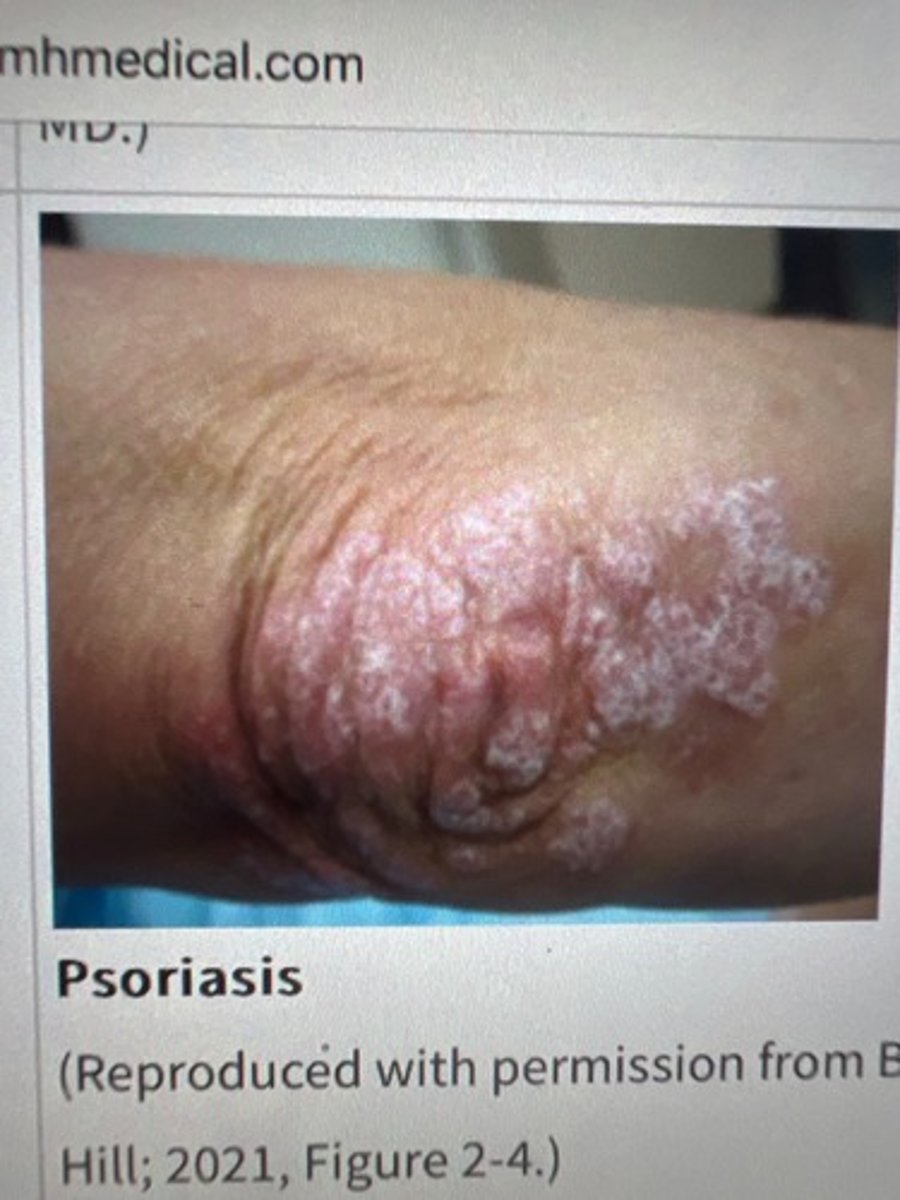
crust
dried serum, blood, or purulent exudate slightly elevated, size varies, brown, red, black, tan or straw in color
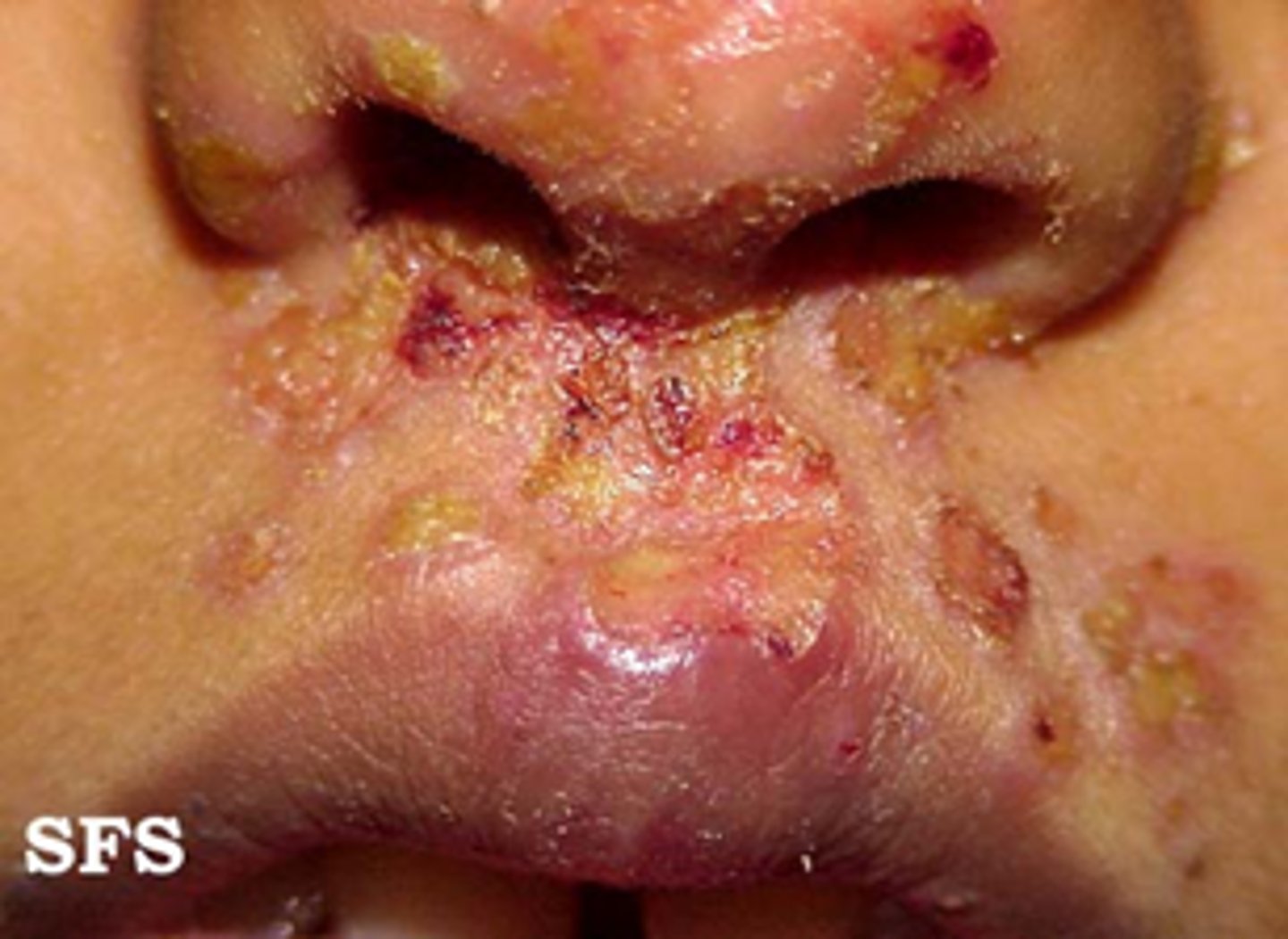
fissure
an opening; a groove; a split
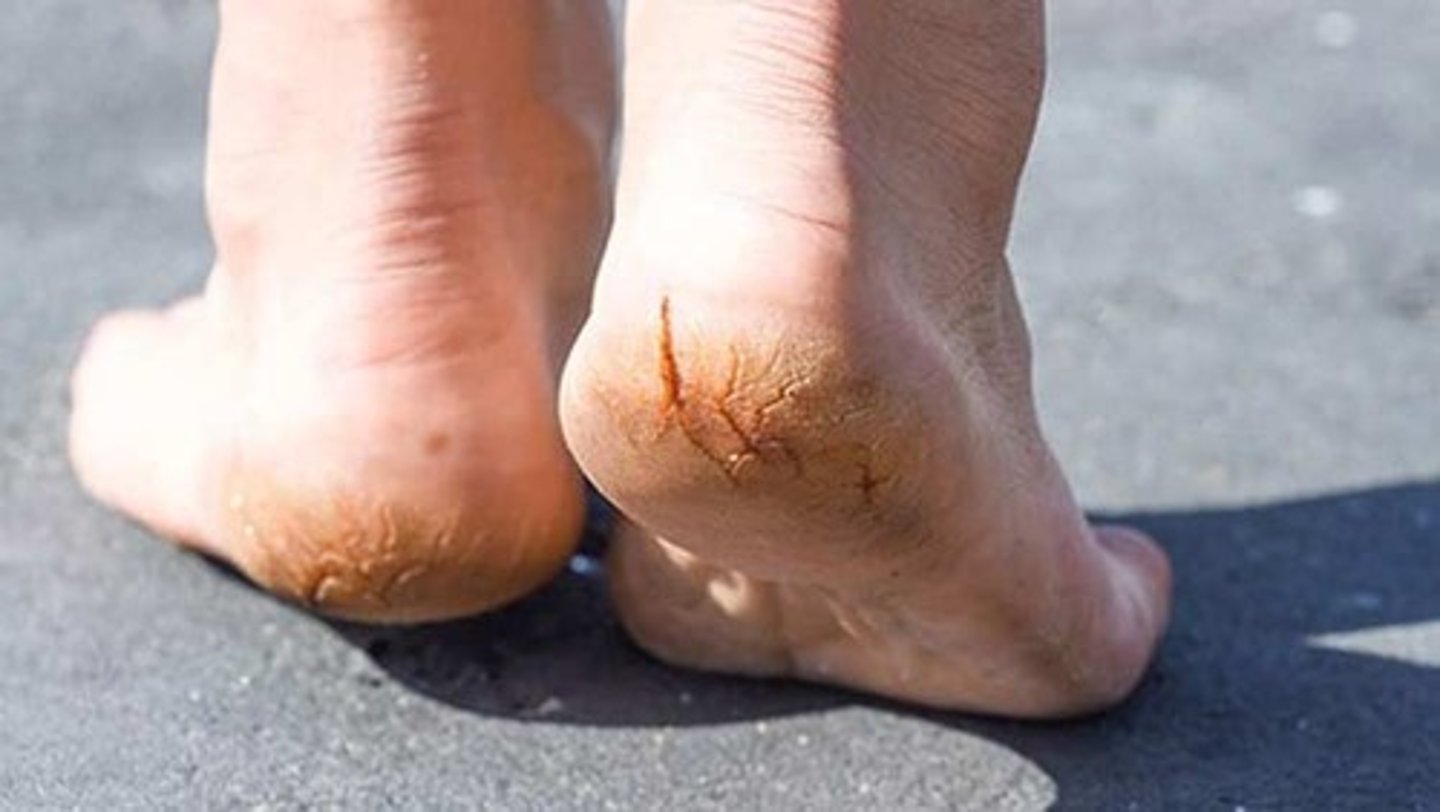
scar
A mark on the skin that is left after a cut or other wound has healed.
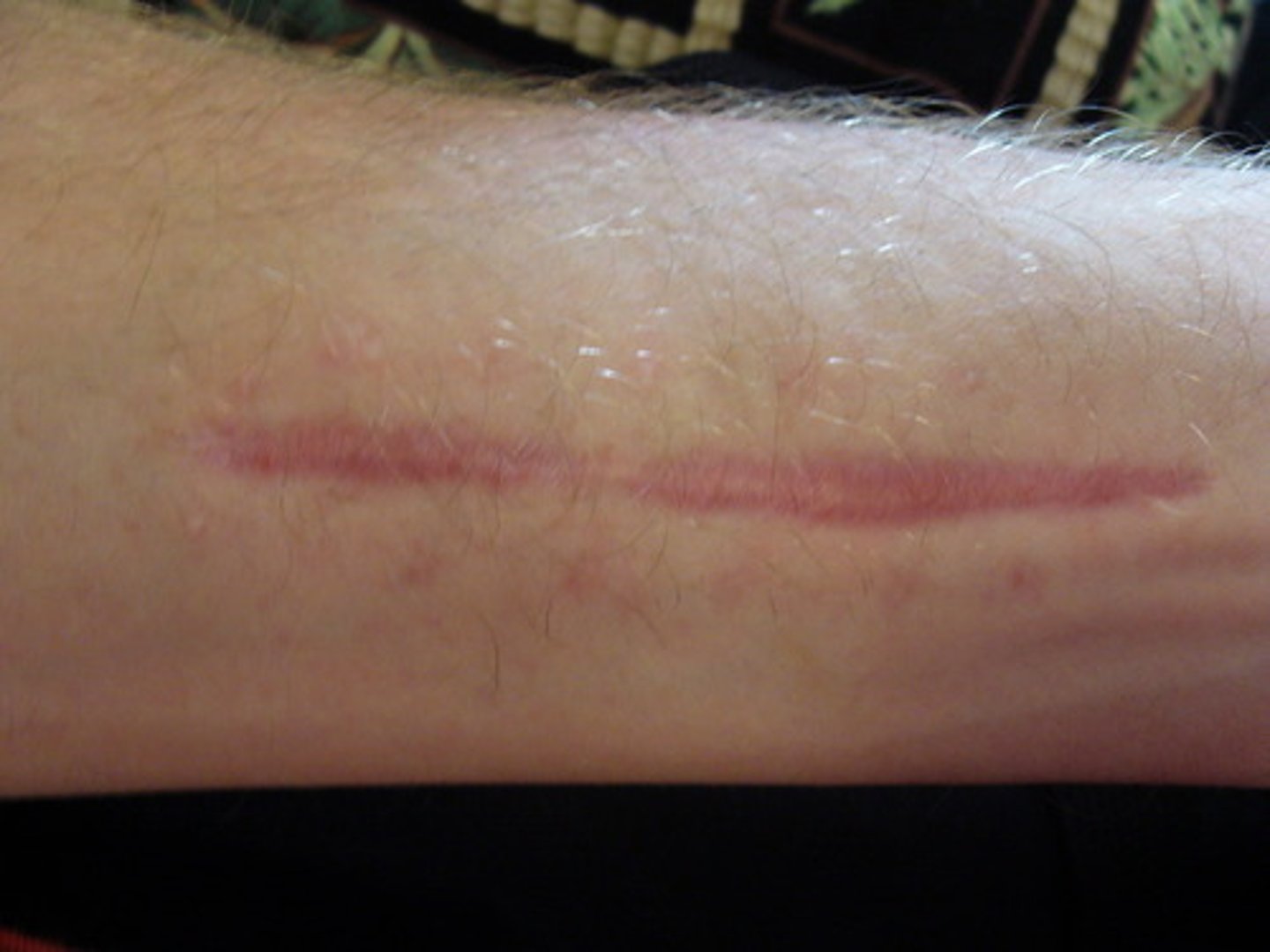
keloid
Thick scar resulting from excessive growth of fibrous tissue
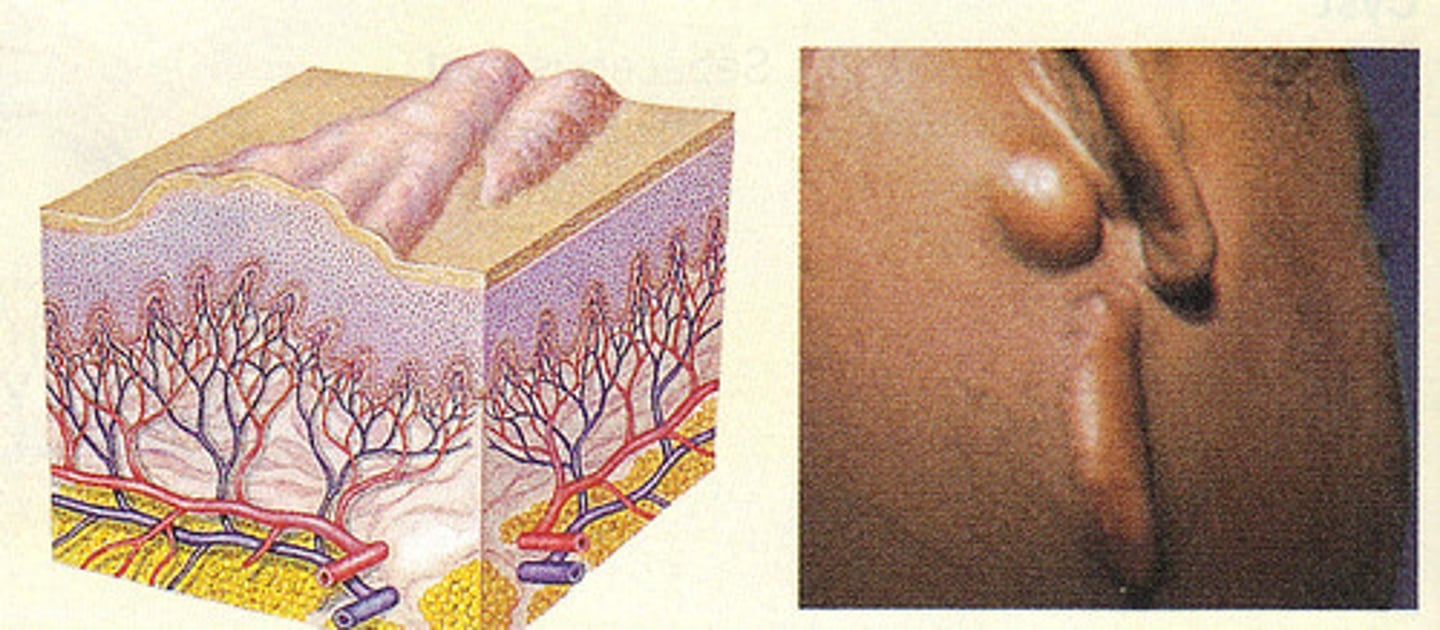
atrophy
thinning of the skin surface and loss of skin markings, skin appears translucent and paper like
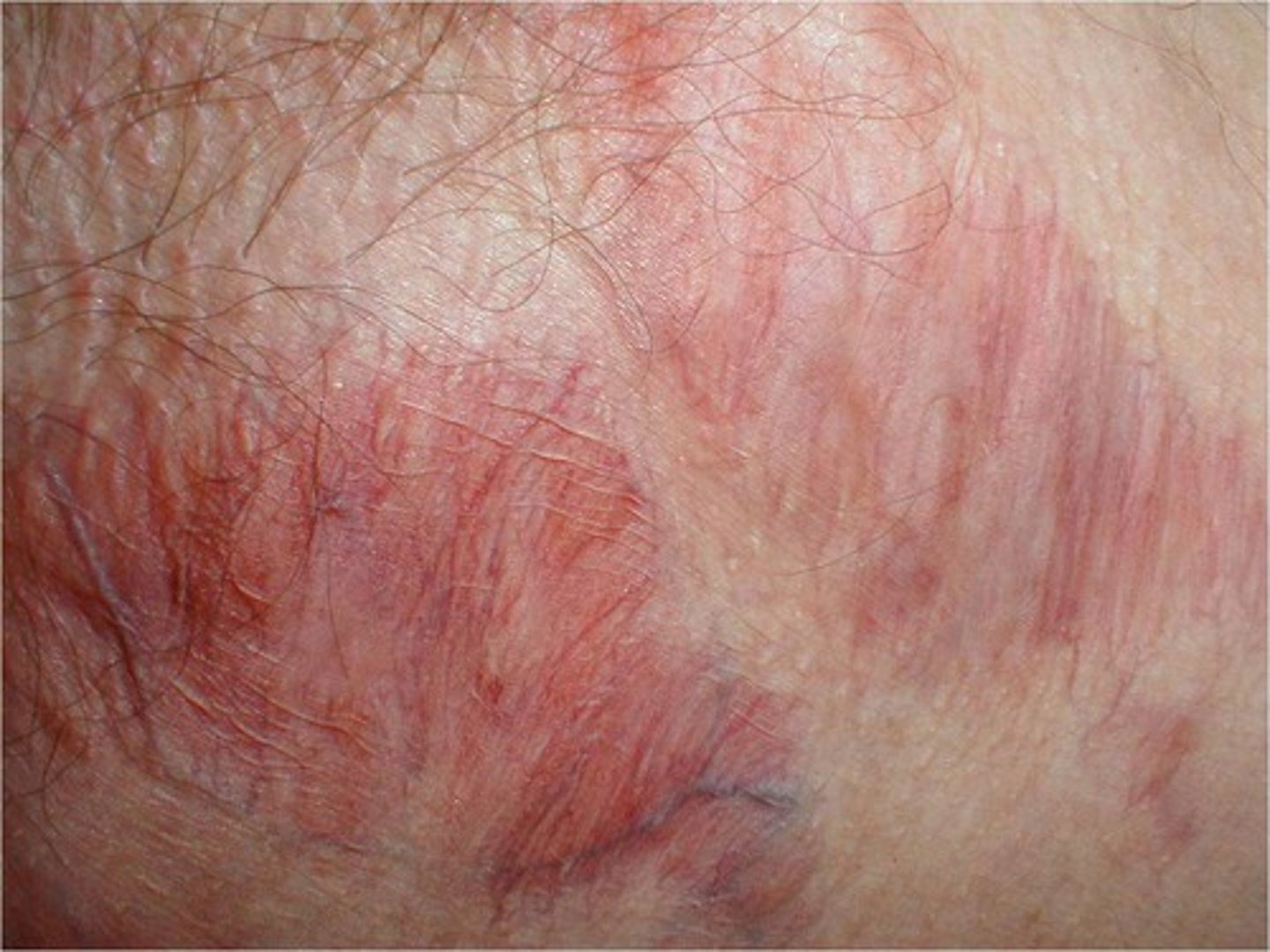
ulcer
open sore or lesion in the skin or mucous membrane
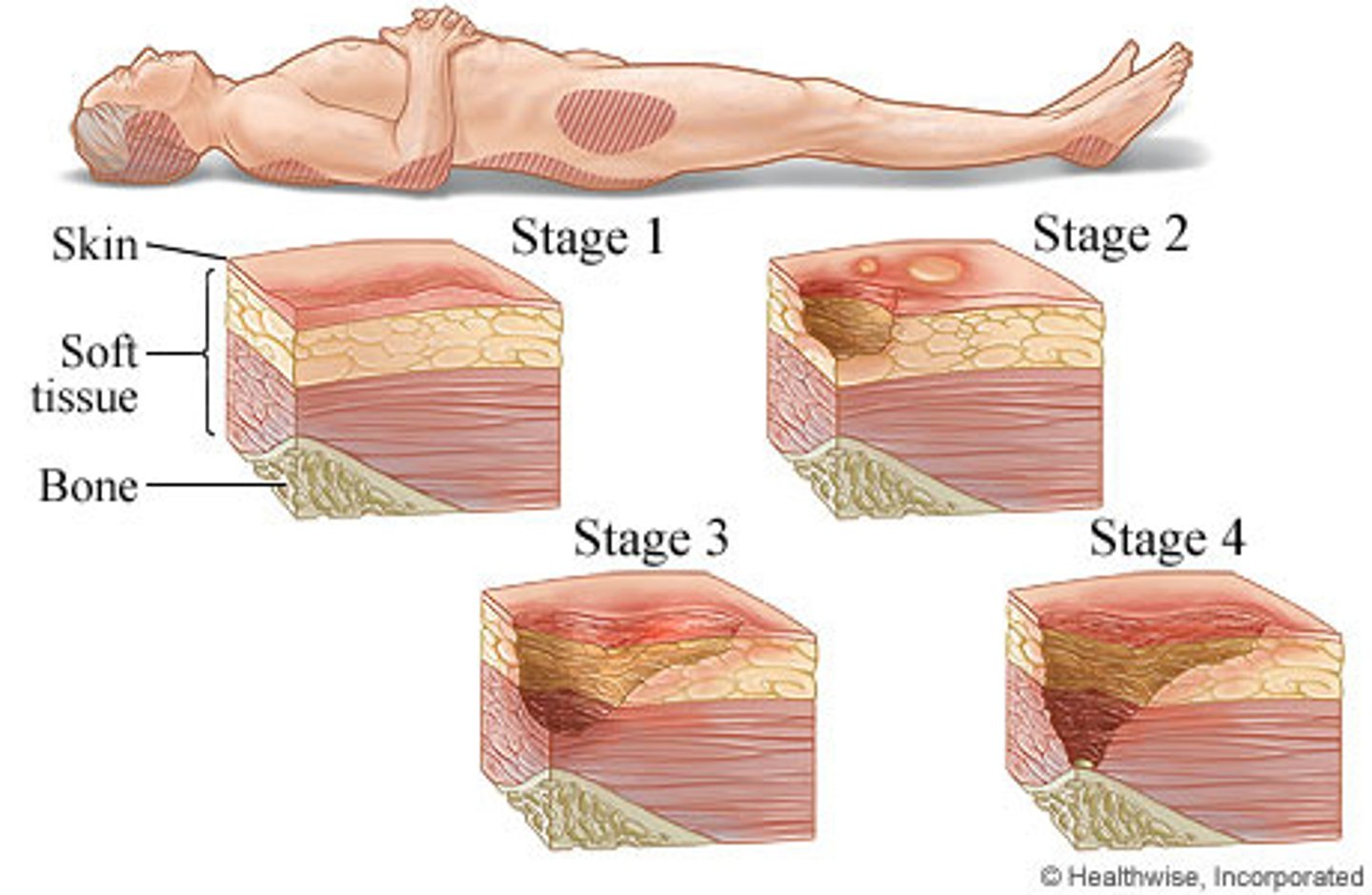
purpura
red-purple skin lesion due to blood in tissues from breaks in blood vessels
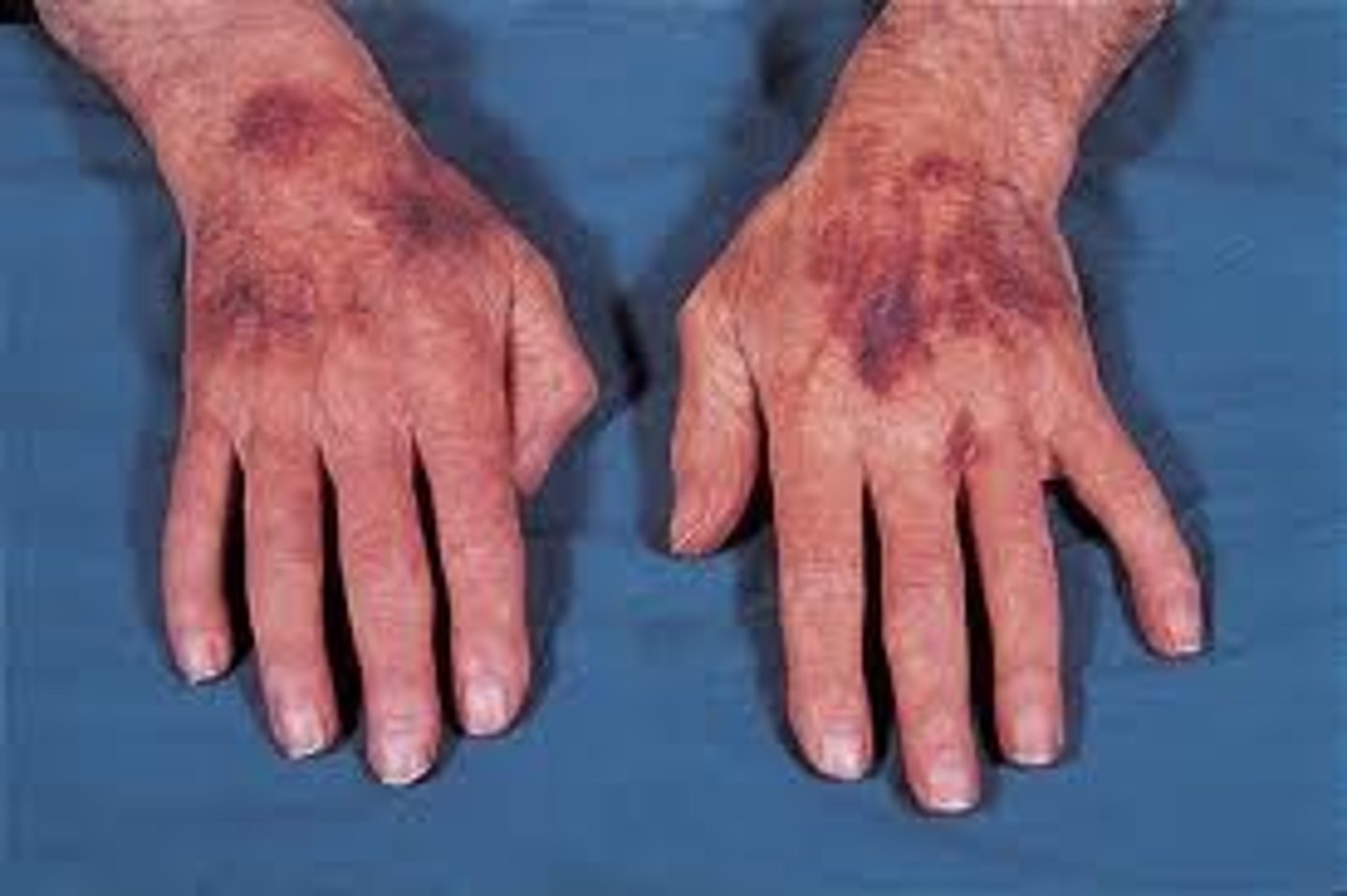
hematoma
a solid swelling of clotted blood within the tissues.
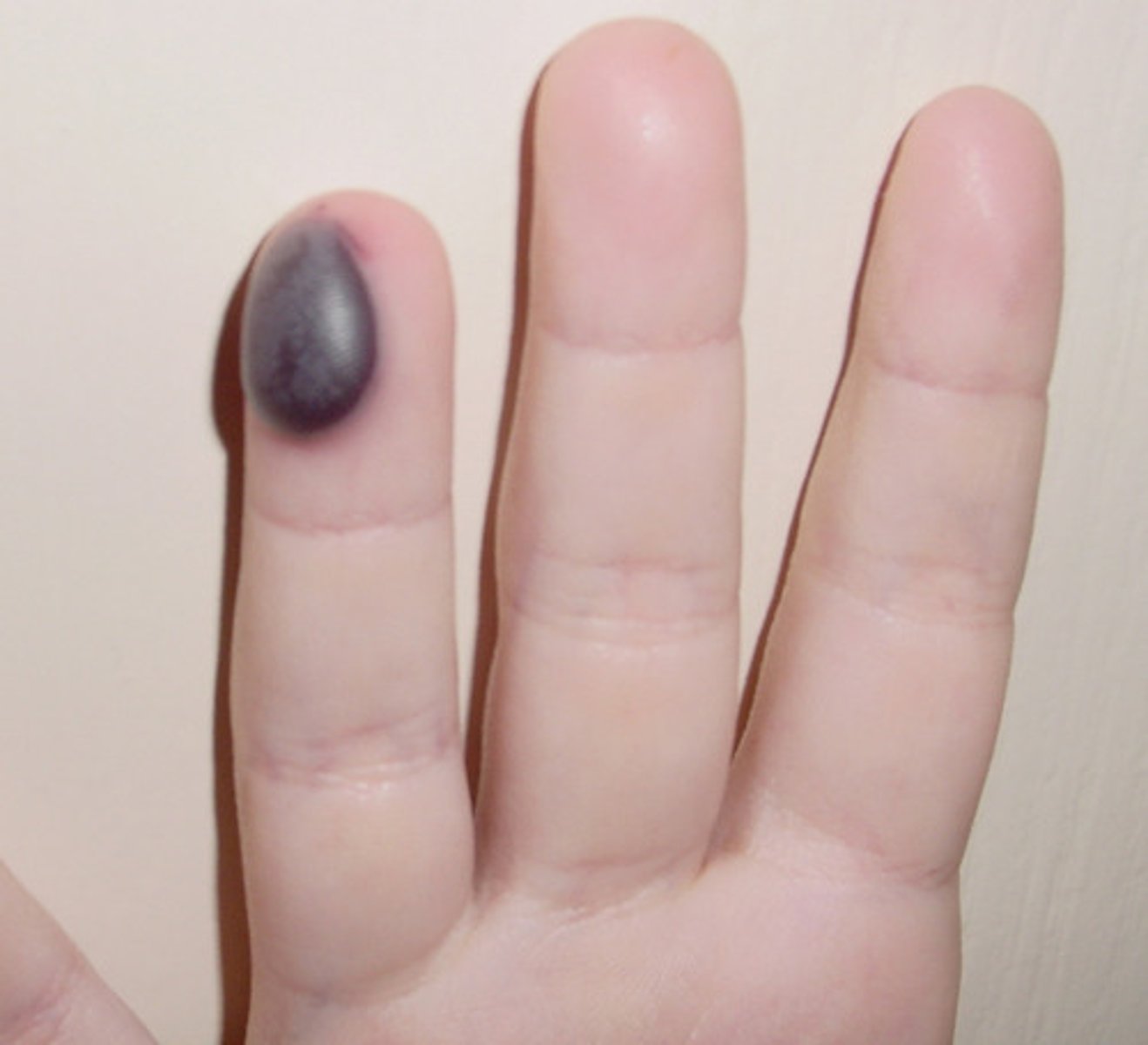
ecchymoses
larger blue or purplish patches on the skin (bruises)
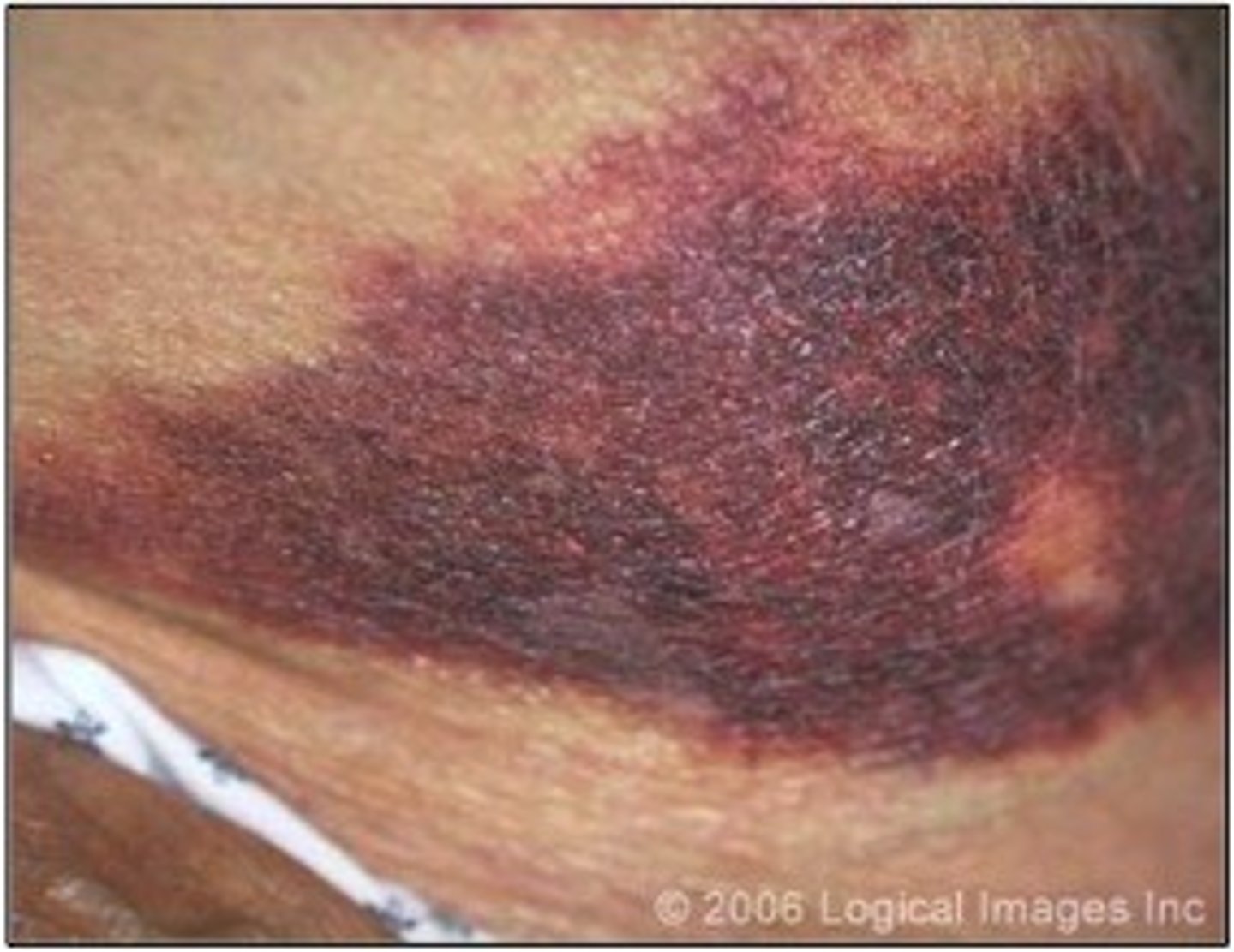
spider angioma
-red center with radiating red legs
-up to 2 cm
-can be raised
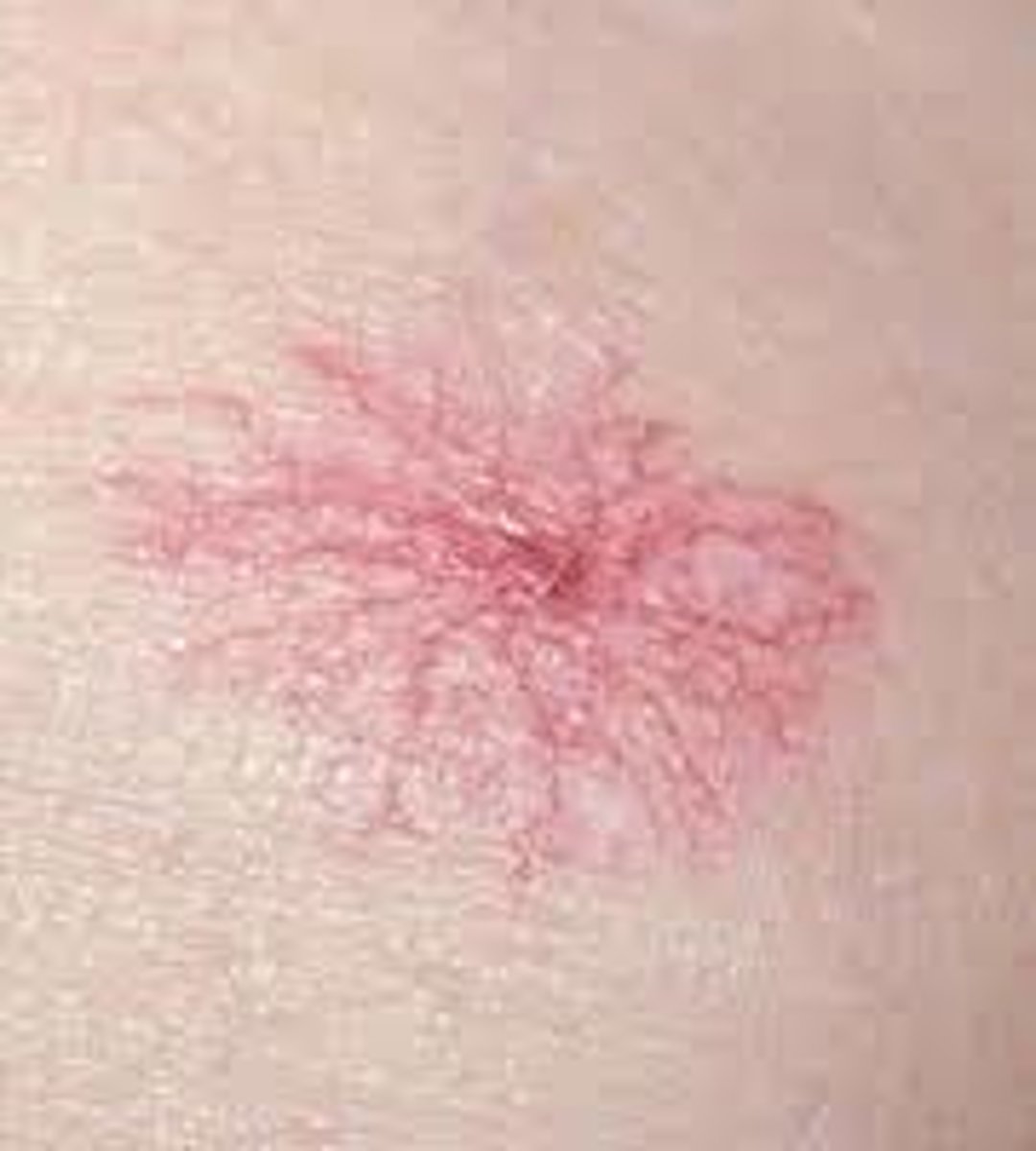
venous star
bluish spider, linear or irregularly shaped; does not blanch with pressure
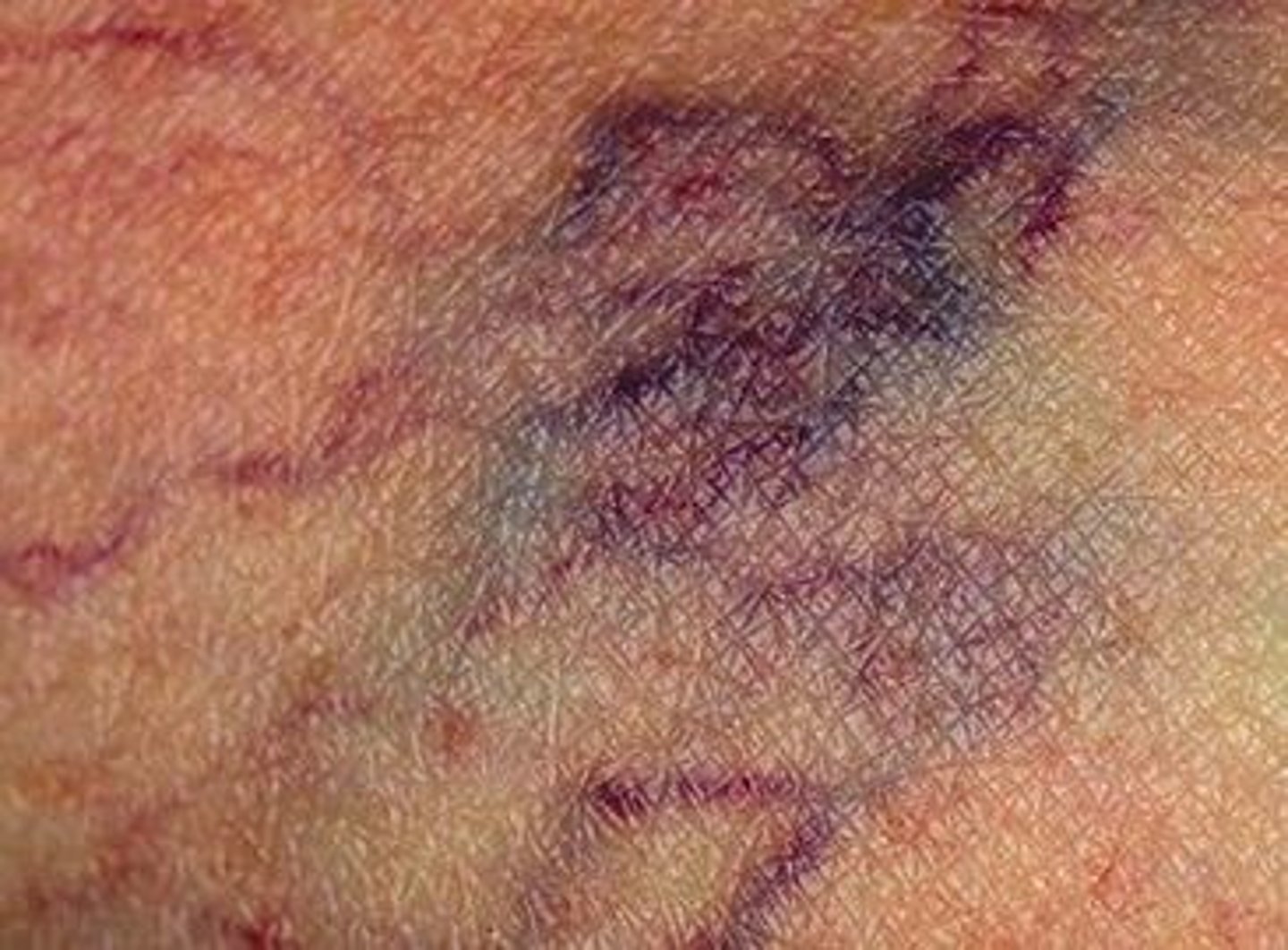
cherry angioma
mole like skin growth made up of small blood vessels or capillaries
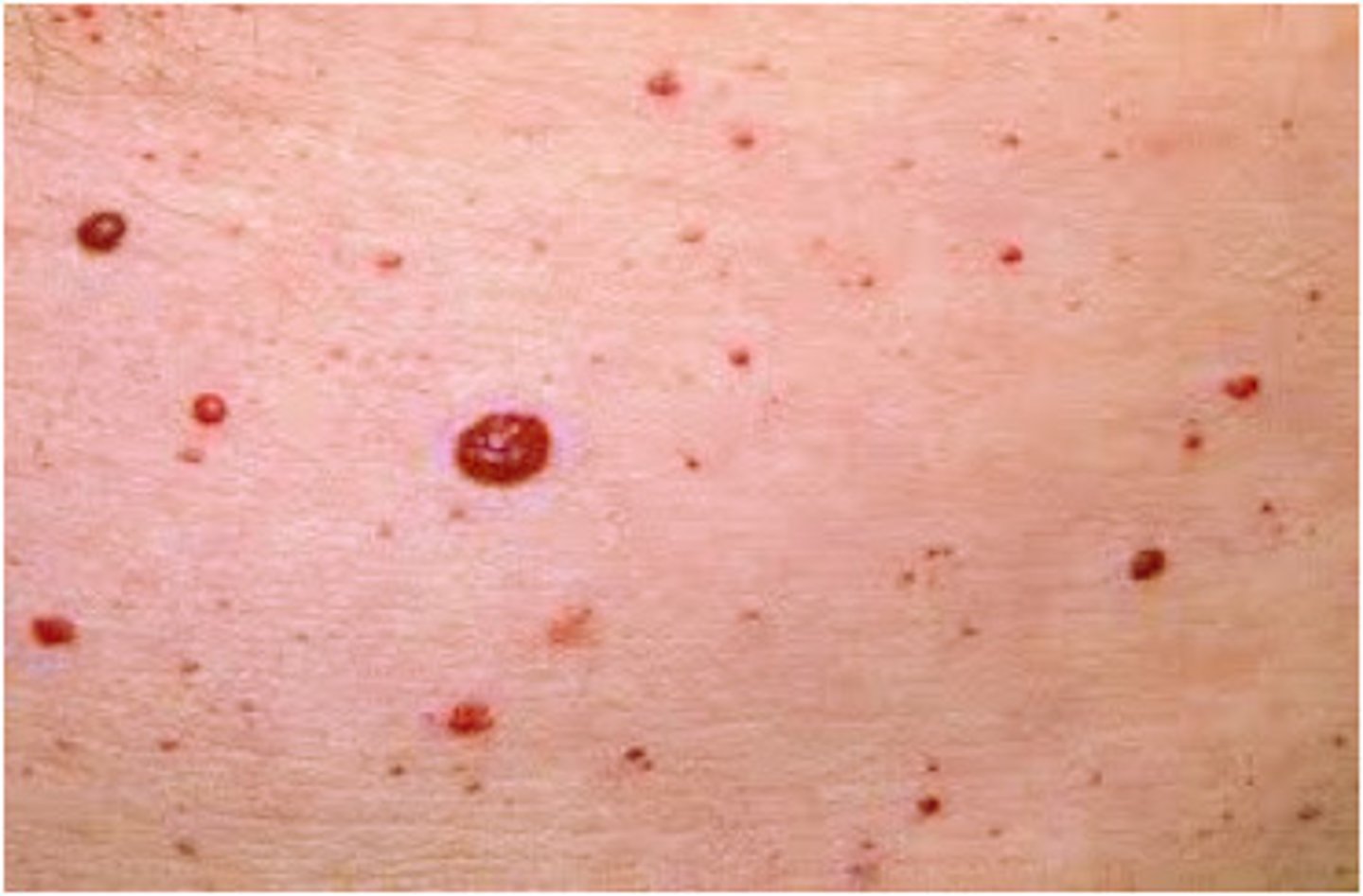
skin breakdown
bedsore
pressure sore
dermal ulcer
decubitus
braden scale
assessment for risk for ulcer development
score 9-23
lower is a higher risk
hair assessment
scalp lesions, itching, infection, lice, texture of hair, changes, cleansing, coloring, perms
IPPA of hair
inspection and palpation
color, amount, texture, pattern of loss, lumps, masses, lesions, scaliness, hygiene
history of nails
changes in nails and cuticles
nail breaking and splitting
cuticle inflammation
IPPA nails
inspection and palpation
color - pink
note ridges, markings hematoma
inspection of nails
shape - check for clubbing
palpation of nails
hard
smooth, firm, pink
smooth, rounded
psoriasis, pitting, onycholysis